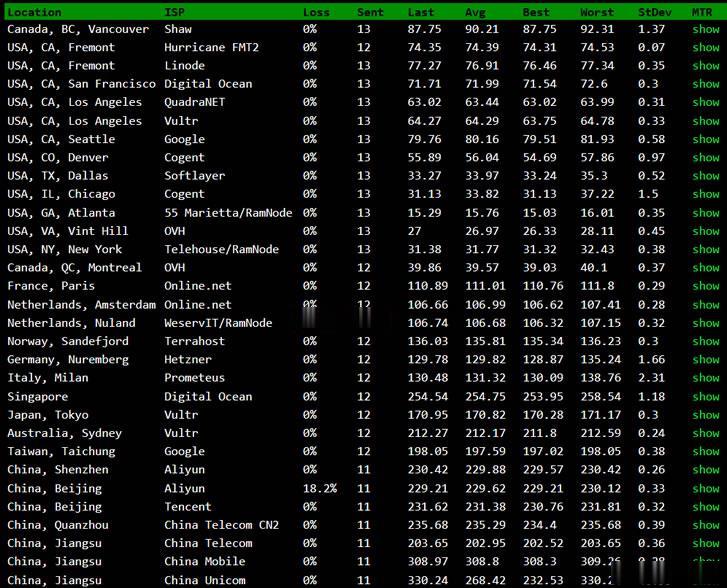acceleratewww.580hu.com
www.580hu.com 时间:2021-03-21 阅读:()
ReviewMechanismsofwater-holdingcapacityofmeat:TheroleofpostmortembiochemicalandstructuralchangesElisabethHu-Lonergan*,StevenM.
LonerganDepartmentofAnimalScience,IowaStateUniversity,Ames,IA50011,USAAbstractUnacceptablewater-holdingcapacitycoststhemeatindustrymillionsofdollarsannually.
However,limitedprogresshasbeenmadetowardunderstandingthemechanismsthatunderliethedevelopmentofdriporpurge.
ItisclearthatearlypostmortemeventsincludingrateandextentofpHdecline,proteolysisandevenproteinoxidationarekeyininuencingtheabilityofmeattoretainmoisture.
Muchofthewaterinthemuscleisentrappedinstructuresofthecell,includingtheintra-andextramyobrillarspaces;therefore,keychangesintheintracellulararchitectureofthecellinuencetheabilityofmusclecellstoretainwater.
Asrigorpro-gresses,thespaceforwatertobeheldinthemyobrilsisreducedanduidcanbeforcedintotheextramyobrillarspaceswhereitismoreeasilylostasdrip.
Lateralshrinkageofthemyobrilsoccurringduringrigorcanbetransmittedtotheentirecellifproteinsthatlinkmyobrilstogetherandmyobrilstothecellmembrane(suchasdesmin)arenotdegraded.
Limiteddegradationofcytoskeletalproteinsmayresultinincreasedshrinkingoftheoverallmusclecell,whichisultimatelytranslatedintodriploss.
Recentevidencesuggeststhatdegradationofkeycytoskeletalproteinsbycalpainproteinaseshasaroletoplayindeterminingwater-holdingcapacity.
Thisreviewwillfocusonkeyeventsinmusclethatinuencestructuralchangesthatareassociatedwithwater-holdingcapacity.
2005ElsevierLtd.
Allrightsreserved.
Keywords:Water-holdingcapacity;Driploss;Calpain;Proteolysis;pHContents1.
Introduction1952.
Structureofskeletalmuscle1953.
Locationofwaterinmuscle1954.
Physical/biochemicalfactorsinmusclethataffectwater-holdingcapacity1964.
1.
Netchargeeffect1964.
2.
Geneticfactors1964.
3.
Stericeffects1975.
Postmortemproteolysis1985.
1.
Calpainsystem1985.
2.
Calpastatin2005.
3.
Roleofproteinoxidation.
2006.
Summary202Acknowledgments202References2020309-1740/$-seefrontmatter2005ElsevierLtd.
Allrightsreserved.
doi:10.
1016/j.
meatsci.
2005.
04.
022*Correspondingauthor.
Tel.
:+15152949125;fax:+15152949143.
E-mailaddress:elonerga@iastate.
edu(E.
Hu-Lonergan).
www.
elsevier.
com/locate/meatsciMEATSCIENCEMeatScience71(2005)194–2041.
IntroductionTheabilityoffreshmeattoretainmoistureisargu-ablyoneofthemostimportantqualitycharacteristicsofrawproducts.
Ithasbeenestimatedthatasmuchas50%ormoreoftheporkproducedhasunacceptablyhighpurgeordriploss(Kauman,Cassens,Scherer,&Meeker,1992;Stetzer&McKeith,2003).
Productweightlossesduetopurgecanaverageasmuchas1–3%infreshretailcuts(Oer&Knight,1988a)andcanbeashighat10%inPSEproducts(Melodyetal.
,2004).
Inadditiontothelossofsalableweight,purgelossalsoentailsthelossofasignicantamountofpro-tein(Oer&Knight,1988a;Oer&Knight,1988b).
Onaverage,purgecancontainapproximately112mgofproteinpermilliliterofuid;mostlywater-soluble,sar-coplasmicproteins(Savage,Warriss,&Jolley,1990).
Themajorityofwaterinmuscleisheldeitherwithinthemyobrils,betweenthemyobrilsandbetweenthemyobrilsandthecellmembrane(sarcolemma),be-tweenmusclecellsandbetweenmusclebundles(groupsofmusclecells).
Oncemuscleisharvestedtheamountofwaterandlocationofthatwaterinmeatcanchangedependingonnumerousfactorsrelatedtothetissueit-selfandhowtheproductishandled(Honikel,2004;Honikel&Kim,1986).
Overtheyearstherehavebeennumerousreviewsdevotedtofactorsthatinuencewater-holdingcapacity(Hamm,1986;Honikel,2004;Honikel&Kim,1986;Oer&Knight,1988a;Oer&Knight,1988b).
Thisreviewwillgiveanoverviewsomeofthemajorfactorsinuencingwater-holdingcapacityandwillspecicallyfocusonrecentdevelopmentsinunderstandinghowchangesinthestructureofpostmor-temmusclecaninuencedriploss.
2.
StructureofskeletalmuscleSkeletalmusclehasaverycomplexorganization,inparttoallowmuscletoecientlytransmitforceorig-inatinginthemyobrilstotheentiremuscleandulti-matelytothelimborstructurethatismoved.
Arelativelythicksheathofconnectivetissue,theepimy-sium,enclosestheentiremuscle.
Inmostmuscles,theepimysiumiscontinuouswithtendonsthatlinkmus-clestobones.
Themuscleissubdividedintobundlesorgroupingsofmusclecells.
Thesebundles(alsoknownasfasciculi)aresurroundedbyanothersheathofconnectivetissue,theperimysium.
Athinlayerofconnectivetissue,theendomysium,surroundsthemusclecellsthemselves.
Theendomysiumliesabovethemusclecellmembrane(sarcolemma)andconsistsofabasementmembranethatisassociatedwithanouterlayer(reticularlayer)thatissurroundedbyalayerofnecollagenbrilsimbeddedinamatrix(Bailey&Light,1989).
Whenmusclecellsareviewedunderamicroscope,veryregulartransversestriationsareseen.
Thesestria-tionsarecausedbyspecializedcontractileorganelles,themyobrils,foundinmuscle.
Thestriationsarisefromalternating,proteindenseA-bandsandlessdenseI-bandswithinthemyobril.
BisectingtheI-bandsaredarklinesknownasZ-lines.
TheareabetweentwoZ-linesisasarcomere.
ThelessdenseI-bandismadeupprimarilyofthinlamentswhiletheA-bandismadeupofthicklamentsandsomeoverlappingthinla-ments(Goll,Robson,&Stromer,1984).
Thebackboneofthethinlamentsismadeupprimarilyoftheproteinactinwhilethelargestcomponentofthethicklamentistheproteinmyosin.
Myosinconsistsofatailorrodre-gionthatformsthebackboneofthethicklamentandaglobularheadregionthatextendsfromthethickla-mentandinteractswithactininthethinlament.
Therigorcomplexformedbytheinteractionofmyosinandactinisoftenreferredtoasactomyosin.
Inelectronmicrographimagesofcontractedmuscleorofpost-rigormuscletheactomyosinlooksverymuchlikecross-bridgesbetweenthethickandthinlaments,indeed,itisoftenreferredtoassuch.
Inpostmortemmusclethesebondsbecomeirreversibleandarealsoknownasrigorbonds.
Theglobularheadofmyosinalsohasenzymaticactivity;itcanhydrolyzeATPandliberateenergy.
Inlivingmuscleduringcontraction,theATPaseactivityofmyosinprovidesenergyformyosinboundtoactintoswivelandultimatelypullthethinlamentstowardthecenterofthesarcomere.
Thisshortensthemyobril,themusclecellandeventuallythemuscletoproducecontraction.
ThemyosinandactincandisassociatewhenanewmoleculeofATPisboundtothemyosinhead(Golletal.
,1984).
Inpost-rigormuscle,thesupplyofATPisdepleted,resultingintheactomyosinbondsbecomingmoreorlesspermanent.
Withinthestructureofthemuscle,thereareseveral''compartments''fromwhichdripcouldoriginate.
Thesecouldincludethespacewithinthemyobril,theintra-cellularspaceoutsidethemyobrilandtheextracellularspace,includingthespacebetweenthemusclebundles.
Lossofwaterfromeachofthesecompartmentsmayin-volveslightlydierentmechanisms.
Inaddition,lossofwaterfromeachofthesecompartmentsmayoccuratdierenttimesduringstorage.
Forexample,itwouldbeeasytoenvisionthatwaterfoundintheextracellularspacescouldbelostmoreeasily,withdeepercompart-mentstakingmoretimeorforcetobereleased.
3.
LocationofwaterinmuscleLeanmusclecontainsapproximately75%water.
Theothermaincomponentsincludeprotein(approximately20%),lipidsorfat(approximately5%),carbohydrates(approximately1%)andvitaminsandminerals(oftenE.
Hu-Lonergan,S.
M.
Lonergan/MeatScience71(2005)194–204195analyzedasash,approximately1%).
Themajorityofwaterinmuscleisheldwithinthestructureofthemuscleandmusclecells.
Specically,withinthemusclecell,waterisfoundwithinthemyobrils,betweenthemyo-brilsthemselvesandbetweenthemyobrilsandthecellmembrane(sarcolemma),betweenmusclecellsandbe-tweenmusclebundles(groupsofmusclecells)(Oer&Cousins,1992).
Waterisadipolarmoleculeandassuchisattractedtochargedspecieslikeproteins.
Infact,someofthewaterinmusclecellsisverycloselyboundtoprotein.
Bydenition,boundwateriswaterthatexistsinthevicinityofnon-aqueousconstituents(likeproteins)andhasreducedmobility,i.
e.
doesnoteasilymovetoothercompartments.
Thiswaterisveryresistanttofreezingandtobeingdrivenobyconventionalheating(Fen-nema,1985).
Trueboundwaterisaverysmallfractionofthetotalwaterinmusclecells;dependingonthemea-surementsystemused,approximately0.
5gofwaterpergramofproteinisestimatedtobetightlyboundtopro-teins.
Sincethetotalconcentrationofproteininmuscleisapproximately200mg/g,thisboundwateronlymakesuplessthanatenthofthetotalwaterinmuscle.
Theamountofboundwaterchangesverylittleifatallinpost-rigormuscle(Oer&Knight,1988b).
Anotherfractionofwaterthatcanbefoundinmus-clesandinmeatistermedentrapped(alsoreferredtoasimmobilized)water(Fennema,1985).
Thewatermole-culesinthisfractionmaybeheldeitherbysteric(space)eectsand/orbyattractiontotheboundwater.
Thiswaterisheldwithinthestructureofthemusclebutisnotboundpersetoprotein.
Inearlypostmortemtissue,thiswaterdoesnotowfreelyfromthetissue,yetitcanberemovedbydrying,andcanbeeasilyconvertedtoiceduringfreezing.
Entrappedorimmobilizedwaterismostaectedbytherigorprocessandtheconversionofmus-cletomeat.
UponalterationofmusclecellstructureandloweringofthepHthiswatercanalsoeventuallyescapeaspurge(Oer&Knight,1988b).
Freewateriswaterwhoseowfromthetissueisunimpeded.
Weaksurfaceforcesmainlyholdthisfrac-tionofwaterinmeat.
Freewaterisnotreadilyseeninpre-rigormeat,butcandevelopasconditionschangethatallowtheentrappedwatertomovefromthestruc-tureswhereitisfound(Fennema,1985).
Themajorityofthewaterthatisaectedbytheprocessofconvertingmuscletomeatistheentrapped(immobilized)water.
Maintainingasmuchofthiswateraspossibleinmeatisthegoalofmanyproces-sors.
Someofthefactorsthatcaninuencethereten-tionofentrappedwaterincludemanipulationofthenetchargeofmyobrillarproteinsandthestructureofthemusclecellanditscomponents(myobrils,cytoskeletallinkagesandmembranepermeability)aswellastheamountofextracellularspacewithinthemuscleitself.
4.
Physical/biochemicalfactorsinmusclethataectwater-holdingcapacity4.
1.
NetchargeeectDuringtheconversionofmuscletomeat,lacticacidbuildsupinthetissueleadingtoareductioninpHofthemeat.
OncethepHhasreachedtheisoelectricpoint(pI)ofthemajorproteins,especiallymyosin(pI=5.
4),thenetchargeoftheproteiniszero,meaningthenum-bersofpositiveandnegativechargesontheproteinsareessentiallyequal.
Thesepositiveandnegativegroupswithintheproteinareattractedtoeachotherandresultinareductionintheamountofwaterthatcanbeat-tractedandheldbythatprotein.
Additionally,sincelikechargesrepel,asthenetchargeoftheproteinsthatmakeupthemyobrilapproacheszero(diminishednetnega-tiveorpositivecharge)repulsionofstructureswithinthemyobrilisreducedallowingthosestructurestopackmorecloselytogether.
Theendresultofthisisareduc-tionofspacewithinthemyobril.
PartialdenaturationofthemyosinheadatlowpH(especiallyifthetemper-atureisstillhigh)isalsothoughttoberesponsibleforalargepartoftheshrinkageinmyobrillarlatticespacing(Oer,1991).
4.
2.
GeneticfactorsAcceleratedpHdeclineandlowultimatepHarere-latedtothedevelopmentoflowwater-holdingcapacityandunacceptablyhighpurgeloss.
RapidpHdeclineresultinginultimateornearultimatepHwhilethemus-cleisstillwarmcausesthedenaturation(lossoffunc-tionalityandwaterbindingability)ofmanyproteins,includingthoseinvolvedinbindingwater.
Themostse-verepurgeordriplossisoftenfoundinPSE(Pale,Soft,andExudative)productfrompigsthathaveinheritedamutationintheryanodinereceptor/calciumreleasechannel(halothanegene)inthesarcoplasmicreticulum(Fujiietal.
,1991).
Thismutationresultsinimpairmentoftheabilityofthischanneltocontrolcalciumreleaseintothesarcoplasmofthemusclecell,particularlyunderperiodsofphysicalstress.
AcceleratedreleaseofcalciumcausesrapidcontractionandanincreaseintherateofmusclemetabolismandintherateofpHdecline(Ben-dall&Wismer-Pedersen,1962;Lundstrom,Essen-Gustavsson,Rundgren,Edforslilja,&Malmfors,1989).
Thisparticularmutationinthehalothanegenecanbeidentiedinparentstock.
Becauseacommercialtestforthismutationexists,theUnitedStatesindustryhasvirtuallyeliminatedthisgeneinmostcommercialherds.
TheHalothanegeneisbutoneexampleofacondi-tionthatcanresultinPSE.
OtherfactorscancausePSEmeattooccur.
Beforeharvest,short-termstressinnormalanimalscanacceleratetheirmetabolismenough196E.
Hu-Lonergan,S.
M.
Lonergan/MeatScience71(2005)194–204thatthepostmortemmetabolisminthemuscleisaccel-erated,causingamorerapidpHdeclinethanisseeninnon-stressedanimals.
WhiletheconditionmaynotbeassevereasthatcausedbytheHalothanegene,pro-teindenaturationdoesoccur,anddriplossescanbegreaterthaninmusclethathasanormal,slowerrateofpHdecline.
ItshouldbenotedthatwhilethepHofthesemusclesfallsfasterthannormal,theultimatepHmaynotbebelownormalranges(Rosenvold&Ander-sen,2003).
Othermetabolicstateandexistingconditionsofmus-cleoftendirecttheextentofpHdeclineinpostmortemmuscle.
Manystudieshavereportedtheeectoftreat-menttodecreaseglycogencontentinmuscletominimizelactateaccumulationinpostmortemmuscle(reviewedbyRosenvold&Andersen,2003).
Geneticfactorsinu-encingbasalmetabolismclearlyhavethepotentialtosimilarlyaectlactateaccumulationandextentofpHdecline.
Thediscovery(Milanetal.
,2000)ofanon-con-servedsubstitutioninproteinkinaseadenosinemono-phosphate-activatedc3-subunitgene(PRKAG3)hasexplainedthedominantmutation(denotedRN)thataccountedforlargedierencesinmeatqualityandpro-cessingyieldintheHampshirepigbreed(Monin&Sel-lier,1985).
Thesubstitution(R200Q)inthePRKAG3genecausesa70%increaseinmuscleglycogeninRNhomozygousandheterozygouspigs.
Thisincreaseinglycogendirectlyresultsingreaterproductionoflactateinpostmortemmuscle,alowerultimatepHandpoorerwaterholdingcapacityinfreshpork.
ThePRKAG3geneencodesoneisoformofoneoftheregulatorysubunits(c)inmammalianadenosinemono-phosphate(AMP)-activatedproteinkinase(AMPK).
Whensubjectedtonutritionalorenvironmentalstress,theAMP/ATPratioofeukaryoticcellswillrise,trigger-ingthe''AMPKcascade'',stimulatingthecellstocon-serveenergy(Thornton,Snowden,&Carling,1998)andtobeginATPsynthesis(Hardie,Carling,&Carl-son,1998).
Theprecisefunctionsofthebandcregula-torysubunitsofAMPKarestillunknown;however,bothareknowntobeimportantforkinaseactivity(Hardie&Carling,1997).
ThecregulatorysubunitalsomaybeinvolvedwiththeAMP-bindingsiteoftheAMPKheterotrimericcomplex(Cheung,Salt,Davies,Hardie,&Carling,2000).
WhilethedominantRNmutationthatisfoundintheHampshirebreedofpigsisanonconservativesubsti-tution(R200Q)inthePRKAG3genethatcauseshighglycogencontentinskeletalmuscleresultingindetri-mentaleectsonprocessingyield(Milanetal.
,2000),otheralleleswithinthesamegeneareassociatedwithlowermuscleglycogencontent,andimprovedmeatqualitytraits(Ciobanuetal.
,2001).
Fromthreemis-sensemutationsidentied(T30N,G52R,I199V)inpor-cinePRKAG3,least-squaresestimatesofgenotypemeansacrossvecommercialpigbreedsdemonstratesignicanteectsbetweentheanalyzedsubstitutionsandproductpHandMinoltaLvalues.
Inthesamestudy,onlyfourhaplotypeswerefoundinthevecom-mercialpopulations.
OneofthosehaplotypeswasfoundtobesignicantlyassociatedwithhigherpHanddarkermeatcolor(T30-G52-I199),whileasecondhadinterme-diatepHandcolorandthetwoothershadthelowestpHandthepoorestcolor(Ciobanuetal.
,2001).
TheseobservationsestablishageneticbasisforvariationinultimatepHacrossmanybreedsandcommerciallines,notjustHampshirepigs.
4.
3.
StericeectsMyobrilsmakeupalargeproportionofthemusclecell.
Theseorganellesconstituteasmuchas82–87%ofthevolumeofthemusclecell.
Asmentionedpreviously,muchofthewaterinsidelivingmusclecellsislocatedwithinthemyobril.
Infact,itisestimatedthatasmuchas85%ofthewaterinamusclecellisheldinthemyo-brils.
Muchofthatwaterisheldbycapillaryforcesarisingfromthearrangementofthethickandthinla-mentswithinthemyobril.
Inlivingmuscle,ithasbeenshownthatsarcomeresremainisovolumetricduringcontractionandrelaxation(Millman,Racey,&Matsu-bara,1981;Millman,Wakabayashi,&Racey,1983).
Thiswouldindicatethatinlivingmuscletheamountofwaterwithinthelamentousstructureofthecellwouldnotnecessarilychange.
However,thelocationofthiswatercanbeaectedbychangesinvolumeasmuscleundergoesrigor.
Asmusclegoesintorigor,cross-bridgesformbetweenthethickandthinlaments,thusreducingavailablespaceforwatertoreside(Oer&Trinick,1983).
IthasbeenshownthatasthepHofporcinemuscleisreducedfromphysiologicalvaluesto5.
2–5.
5(neartheisoelectricpointofmyosin),thedis-tancebetweenthethicklamentsdeclinesanaverageof2.
5nm(Diesbourg,Swatland,&Millman,1988).
Thisdeclineinlamentspacingmayforcesarcoplasmicuidfrombetweenthemyolamentstotheextramyobrillarspace.
Indeed,ithasbeenhypothesizedthatenoughuidmaybelostfromtheintramyobrillarspacetoin-creasetheextramyobrillarvolumebyasmuchas1.
6timesmorethanitspre-rigorvolume(Bendall&Swat-land,1988).
Duringthedevelopmentofrigor,thediameterofmus-clecellshasbeenshowntodecrease(Hegarty,1970;Swatland&Belfry,1985)andislikelytheresultoftrans-mittalofthelateralshrinkageofthemyobrilstotheen-tirecell(Diesbourgetal.
,1988).
Additionally,duringrigordevelopmentsarcomerescanshorten;thisalsore-ducesthespaceavailableforwaterwithinthemyobril.
Infact,ithasbeenshownthatdriplosscanincreaselin-earlywithadecreaseinthelengthofthesarcomeresinmusclecells(Honikel,Kim,Hamm,&Roncales,1986).
Morerecently,highlysensitiveloweldnuclearmagneticE.
Hu-Lonergan,S.
M.
Lonergan/MeatScience71(2005)194–204197resonance(NMR)studieshavebeenusedtogainamorecompleteunderstandingoftherelationshipbetweenmusclecellstructureandwaterdistribution(Bertram,Purslow,&Andersen,2002).
Thesestudieshavesug-gestedthatwithinthemyobril,ahigherproportionofwaterisheldintheI-bandthaninthemoreproteindenseA-band.
Thisobservationmayhelpexplainwhyshortersarcomeres(especiallyincold-shortenedmuscle)areoftenassociatedwithincreaseddriplosses.
Asthemyo-brilshortensandrigorsetsin,theshorteningofthesarcomerewouldleadtoshorteningandsubsequentlow-eringofthevolumeoftheI-bandregioninmyobrils.
Lossofvolumeinthismyobrillarregion(wheremuchwatermayreside),combinedwiththepH-inducedlateralshrinkageofthemyobrilcouldleadtoexpulsionofwaterfromthemyobrillarstructureintotheextramyo-brillarspaceswithinthemusclecell(Bendall&Swatland,1988).
Infact,recentNMRstudiessupportthishypothesis(Bertrametal.
,2002).
Itisthuslikelythatthegradualmobilizationofwaterfromtheintramyobr-illarspacestotheextramyobrillarspacesmaybekeyinprovidingasourceofdrip.
Allofthepreviouslymentionedprocessesinuencetheamountofwaterinthemyobril.
Itisimportanttonotethatshrinkageofthemyobrillarlatticealonecouldnotberesponsibleforthemovementofuidtotheextracellularspaceandultimatelyoutofthemuscle.
Themyobrilsarelinkedtoeachotherandtothecellmembraneviaproteinaceousconnections(Wang&Ra-mirez-Mitchell,1983).
Theseconnections,iftheyaremaintainedintactinpostmortemmuscle,wouldtransferthereductionindiameterofthemyobrilstothemusclecell(Diesbourgetal.
,1988;Kristensen&Purslow,2001;Melodyetal.
,2004;Morrison,Mielche,&Purslow,1998).
Myobrilshrinkagecanbetranslatedintocon-strictionoftheentiremusclecell,thuscreatingchannelsbetweencellsandbetweenbundlesofcellsthatcanfun-neldripoutoftheproduct(Oer&Knight,1988).
Extracellularspacearoundmuscleberscontinuallyin-creasesupto24hpostmortem,butgapsbetweenmuscleberbundlesdecreaseslightlybetween9and24hpost-mortem,perhapsduetouidoutowfromthesemajorchannels(Schafer,Rosenvold,Purslow,Andersen,&Henckel,2002).
Theselinkagesbetweenadjacentmyo-brilsandmyobrilsandthecellmembranearemadeupofseveralproteinsthatareassociatedwithintermediatelamentstructuresandstructuresknownascostameres.
Costameresprovidethestructuralframeworkresponsi-bleforattachingthemyobrilstothesarcolemma.
Pro-teinsthatmakeup,orareassociatedwiththeintermediatelamentsandcostameresinclude(amongothers)desmin,lamin,andsynemin.
dystrophin,talinandvinculin(Greaser,1991).
Ifcostamericlinkagesre-mainintactduringtheconversionofmuscletomeat,shrinkageofthemyobrilsasthemusclegoesintorigorwouldbetransmittedtotheentirecellviatheseprotein-aceouslinkagesandwouldultimatelyreducevolumeofthemusclecellitself(Kristensen&Purslow,2001;Mel-odyetal.
,2004;Oer&Knight,1988b).
Thus,therigorprocesscouldresultinmobilizationofwateroutnotonlyoutofthemyobril,butalsooutoftheextramyo-brilspacesastheoverallvolumeofthecelliscon-stricted(Fig.
1).
Infact,reductioninthediameterofmusclecellshasbeenobservedinpostmortemmuscle(Oer&Cousins,1992).
Thiswaterthatisexpelledfromthemyobrilandultimatelythemusclecelleventuallycollectsintheextracellularspace.
Severalstudieshaveshownthatgapsdevelopbetweenmusclecellsandbe-tweenmusclebundlesduringthepost-rigorperiod(Oer&Cousins,1992;Oeretal.
,1989).
Thesegapsbetweenmusclebundlesaretheprimarychannelsbywhichpurgeowsfromthemeat;someinvestigatorshaveactuallytermedthem''dripchannels''.
5.
PostmortemproteolysisSinceithasbeenhypothesizedthatproteinaceouslinkageswithinthecellmayinuencedripproduction,itisimportanttoinvestigatethefactorsregulatingpost-mortemproteolysisofkeyproteins.
5.
1.
CalpainsystemTheendogenouscalpainsystemplaysamajorroleinregulatingproteolysisofmuscleproteinsunderpost-mortemconditions(Koohmaraie,Schollmeyer,&Dut-son,1986;Lonergan,Hu-Lonergan,Wiegand,&Kriese-Anderson,2001;Maddock,Hu-Lonergan,Rowe,&Lonergan,2005).
Proteinsthataresubstratesofcalpainsincludeproteinslikedesmin,synemin,talinandvinculinthatformthecytoskeletalframeworkofthemusclecell(Bilaketal.
,1998;Evans,Robson,&ProteolysisNoProteolysisFig.
1.
Schematicoverviewingthepotentialchangesinmusclecelldiameterduringpostmortemagingasinuencedbyproteolysis.
198E.
Hu-Lonergan,S.
M.
Lonergan/MeatScience71(2005)194–204Stromer,1984;OShea,Robson,Huiatt,Hartzer,&Stromer,1979;Schmidt,Zhang,Lee,Stromer,&Rob-son,1999).
Thecalpainsystemiscomposedofseveralisoformsofcalcium-dependentcysteineproteases(calpains),andtheirspeciccompetitiveinhibitor,calpastatin(Goll,Thompson,Li,Wei,&Cong,2003).
Thetwobest-characterizedisoformsofcalpainsarel-calpainandm-calpain,whichbothdegradethesamespecicsetofmyobrillarandcytoskeletalproteinsthatarede-gradedasmuscleisconvertedintomeat(Geesink&Koohmaraie,1999;Hu-Lonerganetal.
,1996).
Asthepostmortemperiodprogresses,dramaticchangesoccurwithinthemicroenvironmentofthemusclecell(e.
g.
,de-clineinpH,increaseinionicstrength)(Winger&Pope,1981)thatcanaectcalpainactivity(Hu-Lonerganetal.
,1996;Maddocketal.
,2005).
Asmuscleisconvertedtomeat,manychangesoccur,including:(1)agradualdepletionofavailableenergy,(2)ashiftfromaerobictoanaerobicmetabolismfavoringtheproductionoflac-ticacid,resultinginthepHofthetissuedecliningfromnearneutralityto5.
4–5.
8,(3)ariseinionicstrength,inpart,becauseoftheinabilityofATP-dependentcalcium,sodium,andpotassiumpumpstofunction,and(4)anincreasinginabilityofthecelltomaintainreducingcon-ditions.
Bothl-calpainandm-calpainhaveslowerratesofactivityagainstmyobrillarproteinsubstratesatpHvaluesandionicstrengthssimilartothosefoundinpost-mortemmuscle(Geesink&Koohmaraie,1999;Hu-Lonergan&Lonergan,1999;Kendall,Koohmaraie,Arbona,Williams,&Young,1993).
AlterationsinpHand/orionicstrengthsmaycauseconformationalchangesthatallowanincreaseinthehydrophobicityandaggregationoftheenzyme.
Likewise,pH/ionicstrengthchangesmayaltertheconformationofsubstrateproteinsandrenderthemlesssusceptibletocleavagebyl-calpain(Hu-Lonergan&Lonergan,1999).
Experimentalevidenceexiststhatsupportstheideathatthatproteolysisofkeycytoskeletalproteinssuchastheintermediatelamentprotein,desminmaybere-latedtodripproduction.
Theseproteinshavebeenshowntobedegradedasearlyas45minto6hpostmor-teminsomemuscles(Melodyetal.
,2004).
Degradationoftheseproteinsatsuchanearlytimepostmortemwouldcertainlyallowwaterthatisexpelledfromtheintramyobrillarspacestoremaininthecellforalongerperiodoftime.
Thecorollarytothisisthatreduceddeg-radationofproteinsthattiethemyobriltothecellmembrane(suchasdesmin)resultsinincreasedshrink-ingofthemusclecell,whichisultimatelytranslatedintodriploss.
Certainly,desminisnottheonlycandidateproteintobeinvolved.
Otherproteinsassociatedwithintermediatelamentsandwiththecostamereshavebeenimplicated.
Theseincludetheproteinstalinandvinculin(Bee,Lonergan,&Hu-Lonergan,2004;Kris-tensen&Purslow,2001;Morrisonetal.
,1998).
Thesedierencesindriplossassociatedwithdecreasedprote-olysiscanbeseenasearlyas24–48hpostmortem(Mel-odyetal.
,2004)(Fig.
2).
Similarobservationshavebeenmadeinenhancedporkloins(Davis,Sebranek,Hu-Lonergan,&Lonergan,2004)wherereduceddegrada-tionofdesminwasassociatedwithincreasedpurgeloss.
Signicantcorrelationsbetweendesmindegradationat1and7dpostmortemwithporksirloinpurgelossover7daysinavacuumpackagehavebeenreported(Gardner,Hu-Lonergan,&Lonergan,2005).
Whendesmindeg-radationwasaddedtothestepwiseregressionmodelstopredictpurgeloss,desmindegradationat1daypost-mortemexplained24.
1%ofthevariationinpurgelossinthesirloin.
Infact,desmindegradationatday1post-mortemwastherstindependentvariabletoenterthemodelfromalistofvariablesincludingpHdecline,ulti-matepH,temperaturedecline,colorandrmness.
Thisobservationsupportsthehypothesisthatproteolysisofintermediatelamentproteinsearlypostmortemcanminimizetheowofwaterfromwithinthecelltothedripchannels.
Becausedesminisaknownl-calpainsubstrate(Hu-Lonerganetal.
,1996),itisreasonabletohypothesizethatcalpainautolysisandactivationmayexplainapor-tionofthevariationofdesmindegradationandcouldsubsequentlyinuencedriploss.
Inaneorttodeter-minewhatfactorsinuencedesmindegradation,l-cal-painautolysisinsamplesagedonedaywasdetermined.
Therelativeintensityofintactdesminat1and5dpostmortemwassignicantlycorrelated(r=.
295,and.
270,respectively)withtheproportionofl-calpainlargesubunitpresentastheunautolyzed80kDaproteinat1dpostmortem.
Further,relativeintensityofintactdesminat1,5and7dpostmortemwassignicantlycorrelated(r=.
349,.
385,and.
378,respectively)withtheproportionofl-calpainlargesubunitpresentastheautolyzed76kDaproteinFig.
2.
Relationshipbetweendesmindegradationandpercentagedriplossinporcinelongissimusdorsi.
Driplossovertherst5dayspostmorteminloinsfromfourdierentanimals.
Desminshownat1and5dayspostmortemforeachoftheanimals.
Lackofabandindicatesdesminhasbeendegraded.
E.
Hu-Lonergan,S.
M.
Lonergan/MeatScience71(2005)194–204199at1dpostmortem.
Ithasbeenreportedthat52.
5%ofthevariationdesmindegradationat1dpostmortemcanbeexplainedinamodelthatincludeslointempera-tureat4hpostmortem,lointemperatureat24hpost-mortemandpercentageofl-calpainlargesubunitpresentastheautolyzed76kDaproteinat1dpostmor-tem(Gardneretal.
,2005).
Anegativecorrelationbe-tweenthe76kDaautolysisproductandintactdesminindicatesthatwhenverylittleautolysisoccurredwithintherstdaypostmortem,alargeproportionofdesminremainedintact.
Autolysisofcalpainisthehallmarkforactivationinpostmortemmuscle.
Thus,itiscon-cludedthatconditionsfavorableforcalpainactivationaresimilartothosenecessaryfordesmindegradation.
5.
2.
CalpastatinSincerapidproteolysisofintermediatelamentpro-teins(likedesmin)inmeathasbeenassociatedwithim-provedwater-holdingcapacity(Melodyetal.
,2004;Morrisonetal.
,1998)andtenderness(Melodyetal.
,2004)inporkandbecausethereisstrongevidencethatthecalpainenzymesareresponsibleforpostmortemproteolysisobservedinpre-andpost-rigormuscle(Hu-Lonergan&Lonergan,1999;Hu-Lonerganetal.
,1996;Koohmaraie,1992)itisimportanttocon-sidertheendogenousinhibitorofl-andm-calpain,cal-pastatin.
Calpastatinisaneectiveregulatorofcalpainactivityinpostmortemmuscle(reviewedbyKoohma-raie,1992).
Post-rigorcalpastatinactivityhasexplainedahighproportionofthevariationofmeattenderness(Whippleetal.
,1990).
Thereisadocumentedlinkbe-tweenhighcalpastatinactivity,limitedpostmortemproteolysisoftroponin-T(indicatedbyalimitedappear-anceofa30kDatroponin-Tdegradationproduct)andhighshearforce(Koohmaraie,1992;Lonerganetal.
,2001).
Melodyetal.
(2004)documenteddierencesincalpastatinactivitybetweenmusclesmeasured6and24hpostmorteminsemimembranosus(highest),longiss-imusdorsi(intermediate),andpsoasmajor(lowest).
Thesedierencescorrespondedtosignicantdierencesindesmindegradationbetweenthepsoasmajorandsemimembranosus,providingevidencethatvariationincalpastatinactivitymayprovideapartialexplanationforvariationinobservedproteolysis.
Inmanycases,thephysiologicalexplanationofvariationincalpastatinactivityhasnotbeenexplained.
Ithasbeenhypothesizedthattheremaybeageneticcomponenttovariationincalpastatinactivityagainstcalpain.
Twomissensemuta-tionshavebeenidentiedinthecalpastatingene(R249KandS638R)toclassifyfourhaplotypes,threeofwhichaccountedformostofthegeneticvariationintheUScommercialindustrypopulationsexamined(Ciobanuetal.
,2004).
Haplotype1(249K-638R)wasfoundtobethefavorablehaplotypeasitwasassociatedwithmorejuicyandtenderpork.
Thesedataprovidecompel-lingevidencethatcalpastatingenevariantscontributetodierencesinfreshporkquality,presumablybyregulat-ingcalpainactivityinmeat.
5.
3.
RoleofproteinoxidationPostmortemchangesinmusclearealsoaccompaniedbyamarkedincreaseinindicesofoxidation(Harris,Hu-Lonergan,Lonergan,Jones,&Rankins,2001).
Anotherchangethatoccursinpostmortemmuscledur-ingagingofwholemuscleproductsisincreasedoxida-tionofmyobrillarproteins(Martinaudetal.
,1997).
Thisresultsintheconversionofsomeaminoacidresi-dues,includinghistidine,tocarbonylderivatives(Le-vine,Williams,Stadtman,&Shacter,1994;Martinaudetal.
,1997)andcancausetheformationofintraand/orinterproteindisuldecross-links(Martinaudetal.
,1997;Stadtman,1990).
Ingeneral,bothofthesechangesreducethefunctionalityofproteins(Xiong&Decker,1995).
Becausel-calpainandm-calpainenzymescon-tainbothhistidineandSH-containingcysteineresiduesattheiractivesites,theymaybeparticularlysusceptibletoinactivationbyoxidation.
Therefore,oxidizingcondi-tionsinpostmortemmusclemayleadtoinactivationormodicationofcalpainactivity.
Infact,evidencesuggestsoxidizingconditionsinhibitsproteolysisbyl-calpain,butmightnotcompletelyinhibitautolysis(Guttmann,Elce,Bell,Isbell,&Johnson,1997;Gutt-mann&Johnson,1998).
Inpostmortemmuscle,therearedierencesbetweenmusclesintheratethatpostmor-temoxidationprocessesoccur(Martinaudetal.
,1997).
Ithasbeennotedthatdierencesintherateofoxidationinmuscletissueareseenwhencomparingthesamemus-clesbetweenanimalsand/orcarcassesthathavebeenhandleddierently(Juncheretal.
,2001).
Thesedier-encesmayarisebecauseofdierencesindiet,breed,antemortemstress,postmortemhandlingofcarcasses,etc.
Infact,therehavebeenreportsofdierencesbe-tweenanimalsandbetweenmusclesintheactivityofsomeenzymesinvolvedintheoxidativedefensesystemofmuscle(Daun,Johansson,Onning,&Akesson,2001).
Therefore,theremaybegeneticdierencesinsus-ceptibilitytooxidationthatcouldbecapitalizedontoimprovemeatquality.
Itisthereforereasonabletohypothesizethatdierencesintheantioxidantdefensesystembetweenanimalsand/ormuscleswouldinuencecalpainactivity,proteolysis,andthusqualitycharacter-isticsinuencedbyproteolysissuchastendernessandwaterholdingcapacity.
Experimentalevidenceexiststhatindicateshighlevelsofantioxidantsinmeatcaninuenceproteolysisandearlypostmortemshearforce(Harrisetal.
,2001;Rowe,Maddock,Lonergan,&Hu-Lonergan,2004b).
Roweetal.
(2004b)showedtherewasasignicantincreaseinproteolysisoftropo-nin-Tat2daysofpostmortemaginginsteaksfromsteersfedhighlevelsof1000IUa-tocopherol(Fig.
3).
200E.
Hu-Lonergan,S.
M.
Lonergan/MeatScience71(2005)194–204Takentogether,thesedataindicatethatverylowlevelsofoxidationcaninuenceproteolysis.
Theoxidativestateofthetissue,whichgreatlyinu-encestheactivityofl-calpain(Guttmannetal.
,1997;Guttmann&Johnson,1998),andthepresenceofendog-enousnitricoxidereactionproducts(e.
g.
,peroxynitrite,S-nitrosothiols)arefactorslikelyinuencingcalpainthathavereceivedlittleattention(Koh&Tidball,2000;Maddocketal.
,2005;Rowe,Maddock,Trenkle,Lonergan,&Hu-Lonergan,2003).
Becausel-andm-calpainhaveanoxidizablecysteineresidueattheirac-tivesite,theyrequirereducingconditionstobeactive(Guttmannetal.
,1997).
ThisactivesitecysteinemayalsobereversiblyS-nitrosylatedleadingtoinactivationofthecalpain(Koh&Tidball,2000).
Therefore,oxidiz-ingandnitrosylatingspeciesinthetissuecouldinhibitcalpainsandserveasaregulatoryfactor.
Ithasbeenshownthatthepresenceofoxidizingspe-ciesdoessignicantlyimpedetheabilityofcalpainstodegradetheirsubstrates.
OxidationwithH2O2signi-cantlylimitsproteolyticactivityofl-andm-calpainagainsttheuorescentpeptideSuc-Leu-Leu-Val-Tyr-AMC,regardlessofthepHorionicstrength(Roweetal.
,2003)(Fig.
4).
Similarresultswereseenwhenusingpuriedmyobrilsasthesubstrate(Maddock,Hu-Lonergan,Rowe,&Lonergan,2004).
Inhibitionofcalpainwithhydrogenperoxide(demonstratedwithboththeuorescentsubstrateandthemyobrils)isreversibleasadditionofreducingagent(DTT)totheoxidizedsamplesrestoresactivity.
Inmuscletissuethathasbeenexposedtoirradiationtoinduceoxidation(Rowe,Maddock,Lonergan,&Hu-Lonergan,2004a)duringtheearlypostmortemperiod,degradationofsev-eralproteinsisarrested,includingdesmin(Fig.
5)(Roweetal.
,2004b;Roweetal.
,2003).
Invitrostudiesusingpuriedcalpaintodegrademyobrilsinthepresenceofhydrogenperoxide(oxidizingagent)havealsoshownthatoxidizingconditionsmaylimittheabilityofcalpaintodegradeitssubstratesincludingdesmin(Maddocketal.
,2004).
Inmuscletissue,oxidizingconditionsdoappeartoreversiblyinhibitcalpain.
Roweetal.
(2004b)usedirradiationasatooltostudycalpainactiv-ityinoxidizedearlypostmortemmeatusingcaseinzymography.
Thisactivityassayinvolvedrunningthesupernatantfractionextractedfromfresh(neverfrozen)steaksrightafterirradiationandateachofthedaysofagingonnon-reducing,non-denaturingpolyacrylamidegels.
Thesegelscontainedcaseinintheseparatinggelsolution.
Aftergelswererun,theywereincubatedatroomtemperatureina5mMcalciumchloridesolutioncontaining0.
1%2-mercaptoethanoltoreducereversiblyoxidizedcalpainandallowittodegradecasein.
Calpainactivitywasidentiedbytheappearanceofclearingzones(lightbands,Fig.
6)afterthegelwasstainedinCoomassieBrilliantBlue(Raser,Posner,&Wang,1995).
Becausecalpainlosesactivityafterextensiveautolysis,lossofcalpainactivityduringpostmortemagingofmeatindicatesprioractivation.
Calpainthatispre-ventedfrombeingactiveinthetissuewillnotfullyauto-lyzeandwillthusbeabletobeactivatedoncetheconditionsforactivityaresatised(forexample,amplecalciumandreducingconditionsasinthecaseingelas-01020304050607.
5,1657.
5,2955.
6,1655.
6,295Non-OxidizedOxidizedFlousercUecnenitspHandIonicStrength(mMNaCl)ConditionsabceddeeFig.
4.
Eectofoxidizingconditions(100lMH2O2)ontheactivityofl-calpainunderdierentpHandionicstrengthconditionsafter15minofincubationat25°C.
TheuorescentpeptideSuc-Leu-Leu-Val-Tyr-AMCwasusedasthesubstrate.
a–esignicantdierencesatP<0.
01.
Fig.
3.
(a)WesternblotofTroponin-Tinpuriedmyobrilsfromnon-irradiatedsteaksfromcontroldietfedanda-tocopherol(vitaminE)fedsteers.
(b)DensitometryofthedegradationproductofTroponin-T(30kDaband).
Anincreasedvalueindicatesmoredegradation.
Fig.
5.
Westernblotofdesmininpuriedmyobrilsfromirradiated(Irr)andnon-irradiated(NI)beeflongissimusdorsiaged7dayspostmortem.
E.
Hu-Lonergan,S.
M.
Lonergan/MeatScience71(2005)194–204201say).
Thisstudyshowedconsistentlythatl-calpaininnon-irradiatedsampleslostactivityfasterthaninirradi-atedsamplesfromthesameanimals.
Thel-calpainfromtheirradiatedsamplesshowedlittlechangeinactivityasagingtimeprogressed.
Infact,theirradiatedsampleshadmorel-calpainactivityat7daysafterirradiationthandidthenon-irradiatedsamplesfromthesamecar-casses(Fig.
6)potentiallyindicatingl-calpainwasnotactiveintheirradiatedmuscle.
However,oncecalpainwasremovedfromthetissueandsubjectedtoreducingconditionsinthecaseinzymogramassay,itwasactive;furtherevidencethatinthetissue,l-calpainmayhavebeeninactivated(butreversibly)byoxidation.
6.
SummaryThemechanismofwater-holdingcapacityiscenteredintheproteinsandstructuresthatbindandentrapwater,specicallythemyobrillarprotein.
ThereisagreatbodyofevidencethatdemonstratesadirecteectofpH,ionicstrength,andoxidationontheabilityofmyobrillarproteinandmyobrilsandmusclecellstoentrapwater.
Independentoftheseeects,itisclearthatthesamefactors(pHdecline,ionicstrength,oxidation)alsoaectproteolysisofkeycytoskeletalproteinsinpostmortemmuscle.
VariationinwaterholdingcapacityatgivenpH,andtemperatureofstorageisproposedtobeatleastpartiallyduetovariationinproteolysisandtheresultingmusclecellshrinkageandmobilizationofwatertotheextracellularspace.
Becauseofthis,investi-gationsofmetabolic,chemicalandgeneticsourcesofvariationinpostmortemproteolysisshouldprovidenewinsightintomechanismsgoverningwater-holdingcapacity.
AcknowledgmentsTheauthorsaregratefultotheUnitedStatesDepart-mentofAgricultureNationalResearchInitiativeCom-petitiveGrantsProgram(USDANRICGP)forfundingsomeoftheworkreviewedinthisdocument.
ReferencesBailey,A.
J.
,&Light,N.
D.
(1989).
Connectivetissueinmeatandmeatproducts.
Barking,England:ElsevierAppliedScience.
Bee,G.
,Lonergan,S.
M.
,&Hu-Lonergan,E.
(2004).
EarlypostmortempHinuencesproteolysisofcytoskeletalproteinsduringaginginporcinelongissimusmuscle.
JournalofAnimalScience,82(Suppl.
1),13.
Bendall,J.
R.
,&Swatland,H.
J.
(1988).
AreviewoftherelationshipsofpHwithphysicalaspectsofporkquality.
MeatScience,24,85–126.
Bendall,J.
R.
,&Wismer-Pedersen,J.
(1962).
Somepropertiesofthebrillarproteinsofnormalandwateryporkmuscle.
JournalofFoodScience,27,144–159.
Bertram,H.
C.
,Purslow,P.
P.
,&Andersen,H.
J.
(2002).
Relationshipbetweenmeatstructure,watermobility,anddistribution:alow-eldnuclearmagneticresonancestudy.
JournalofAgriculturalandFoodChemistry,50,824–829.
Bilak,S.
R.
,Sernett,S.
W.
,Bilak,M.
M.
,Bellin,R.
M.
,Stromer,M.
H.
,Huiatt,T.
W.
,etal.
(1998).
Propertiesofthenovelintermediatelamentproteinsyneminanditsidenticationinmammalianmuscle.
ArchivesofBiochemistryandBiophysics,355,63–76.
Cheung,P.
C.
,Salt,I.
P.
,Davies,P.
L.
,Hardie,D.
G.
,&Carling,D.
(2000).
Characterizationofamp-activatedproteinkinase.
Phos-phorylationofglycogensynthaseandphosphorylationkinase.
BiochemicalJournal,346,659–669.
Ciobanu,D.
C.
,Bastiaansen,J.
,Lonergan,S.
M.
,Thomsen,H.
,Dekkers,J.
C.
M.
,Plastow,G.
S.
,etal.
(2004).
Newallelesincalpastatingeneareassociatedwithmeatqualitytraitsinpigs.
JournalofAnimalScience,82,2829–2839.
Ciobanu,D.
C.
,Bastiaansen,J.
,Malek,M.
,Helm,J.
,Wollard,J.
,Plastow,G.
,etal.
(2001).
Evidencefornewallelesintheproteinkinaseadenosinemonophosphate-activatedc3-subunitgeneasso-ciatedwithlowglycogencontentinpigskeletalmuscleandimprovedmeatquality.
Genetics,159,1151–1162.
Daun,C.
,Johansson,M.
,Onning,G.
,&Akesson,B.
(2001).
Glutathioneperoxidaseactivity,tissueandsolubleseleniumcontentinbeefandporkinrelationtomeatageingandpigRNphenotype.
FoodChemistry,73,313–319.
Davis,K.
J.
,Sebranek,J.
G.
,Hu-Lonergan,E.
,&Lonergan,S.
M.
(2004).
Theeectsofagingonmoisture-enhancedporkloins.
MeatScience,66,519–524.
Diesbourg,L.
,Swatland,H.
J.
,&Millman,B.
M.
(1988).
X-ray-diractionmeasurementsofpostmortemchangesinthemyola-mentlatticeofpork.
JournalofAnimalScience,66,1048–1054.
Evans,R.
R.
,Robson,R.
M.
,&Stromer,M.
H.
(1984).
Propertiesofsmoothmusclevinculin.
JournalofBiologicalChemistry,259,3916–3924.
Fennema,O.
R.
(1985).
Waterandice.
InO.
R.
Fennema(Ed.
),Foodchemistry.
NewYork:MarcelDekkerInc.
Fujii,J.
,Otsu,K.
,Zorzato,F.
,Deleon,S.
,Khanna,V.
K.
,Weiler,J.
E.
,etal.
(1991).
Identicationofamutationinporcineryanodinereceptorassociatedwithmalignanthyperthermia.
Science,253,448–451.
Gardner,M.
A.
,Hu-Lonergan,E.
,Lonergan,S.
M.
(2005).
Predic-tionoffreshporkqualityusingindicatorsofproteindegradationFig.
6.
Caseinzymogramofl-calpainactivityinthesarcoplasmicextractsofirradiated(Irr)andnon-irradiated(NonIrr)steaks.
Onesteakfromeachcarcasswasirradiatedandonesteakwasnot.
Clearzones(lightbands)indicatecalpainactivity.
Extractionwasdoneandgelswereruneitherimmediatelyfollowingirradiation(toppanel)orafter7daysofstoragefollowingirradiation(bottompanel).
C17,E18,C19,E20indicatesamplesfromdierentanimals.
202E.
Hu-Lonergan,S.
M.
Lonergan/MeatScience71(2005)194–204andcalpainactivation.
In:Proceedings,51stinternationalcongressofmeatscienceandtechnology,51,inpress.
Geesink,G.
H.
,&Koohmaraie,M.
(1999).
Postmortemproteolysisandcalpain/calpastatinactivityincallipygeandnormallambbicepsfemorisduringextendedpostmortemstorage.
JournalofAnimalScience,77,1490–1501.
Goll,D.
E.
,Robson,R.
M.
,&Stromer,M.
H.
(1984).
Skeletalmuscle,nervoussystem,temperatureregulation,andspecialsenses.
InM.
J.
Swensen(Ed.
),Dukesphysiologyofdomesticanimals(pp.
548–580).
Ithaca(NY):CornellUniversityPress.
Goll,D.
E.
,Thompson,V.
F.
,Li,H.
Q.
,Wei,W.
,&Cong,J.
Y.
(2003).
Thecalpainsystem.
PhysiologicalReviews,83,731–801.
Greaser,M.
L.
(1991).
Anoverviewofthemusclecellcytoskeleton.
ReciprocalMeatsConferenceProceedings(Vol.
44,pp.
1–5).
Savoy(IL):AmericanMeatScienceAssociation.
Guttmann,R.
P.
,Elce,J.
S.
,Bell,P.
D.
,Isbell,J.
C.
,&Johnson,G.
V.
(1997).
OxidationinhibitssubstrateproteolysisbycalpainIbutnotautolysis.
JournalofBiologicalChemistry,272,2005–2012.
Guttmann,R.
P.
,&Johnson,G.
V.
(1998).
Oxidativestressinhibitscalpainactivityinsitu.
JournalofBiologicalChemistry,273,13331–13338.
Hamm,R.
(1986).
Functionalpropertiesofthemyobrillarsystemandtheirmeasurements.
InP.
J.
Bechtel(Ed.
),Muscleasfood(pp.
135–199).
NewYork:AcademicPress,Inc.
Hardie,D.
G.
,&Carling,D.
(1997).
TheAMP-activatedproteinkinase–fuelgaugeofthemammaliancellEuropeanJournalofBiochemistry,246,259–273.
Hardie,D.
G.
,Carling,D.
,&Carlson,M.
(1998).
TheAMP-activated/SNF1proteinkinasesubfamily:metabolicsensorsoftheeukary-oticcellAnnualReviewofBiochemistry,67,821–855.
Harris,S.
E.
,Hu-Lonergan,E.
,Lonergan,S.
M.
,Jones,W.
R.
,&Rankins,D.
(2001).
Antioxidantstatusaectscolorstabilityandtendernessofcalciumchloride-injectedbeef.
JournalofAnimalScience,79,666–677.
Hegarty,P.
V.
(1970).
Dierencesinbresizeofhistologicallyprocessedpre-andpost-rigormouseskeletalmuscle.
LifeSciences,9,443–449.
Honikel,K.
O.
(2004).
Water-holdingcapacityofmeat.
InM.
F.
tePas,M.
E.
Everts,&H.
P.
Haagsman(Eds.
),Muscledevelopmentoflivestockanimals:Physiology,geneticsandmeatquality(pp.
389–400).
Cambridge,MA:CABIPublishing.
Honikel,K.
O.
,&Kim,C.
J.
(1986).
CausesofthedevelopmentofPSEpork.
Fleischwirtschaft,66,349–353.
Honikel,K.
O.
,Kim,C.
J.
,Hamm,R.
,&Roncales,P.
(1986).
Sarcomereshorteningofprerigormusclesanditsinuenceondriploss.
MeatScience,16,267–282.
Hu-Lonergan,E.
,&Lonergan,S.
M.
(1999).
Postmortemmecha-nismsofmeattenderization:therolesofthestructuralproteinsandthecalpainsystem.
InY.
L.
Xiong,C.
-T.
Ho,&F.
Shahidi(Eds.
),Qualityattributesofmusclefoods(pp.
229–251).
NewYork:KluwerAcademic/PlenumPublishers.
Hu-Lonergan,E.
,Mitsuhashi,T.
,Beekman,D.
D.
,Parrish,F.
C.
,Olson,D.
G.
,&Robson,R.
M.
(1996).
Proteolysisofspecicmusclestructuralproteinsbymu-calpainatlowpHandtemper-atureissimilartodegradationinpostmortembovinemuscle.
JournalofAnimalScience,74,993–1008.
Juncher,D.
,Ronn,B.
,Mortensen,E.
T.
,Henckel,P.
,Karlsson,A.
,Skibsted,L.
H.
,etal.
(2001).
Eectofpre-slaughterphysiologicalconditionsontheoxidativestabilityofcolourandlipidduringchillstorageofpork.
MeatScience,58,347–357.
Kauman,R.
G.
,Cassens,R.
G.
,Scherer,A.
,&Meeker,D.
L.
(1992).
Variationsinporkquality.
DesMoines(IA):NationalPorkProducersCouncil.
Kendall,T.
L.
,Koohmaraie,M.
,Arbona,J.
R.
,Williams,S.
E.
,&Young,L.
L.
(1993).
EectofpHandionicstrengthonbovinem-calpainandcalpastatinactivity.
JournalofAnimalScience,71,96–104.
Koh,T.
J.
,&Tidball,J.
G.
(2000).
Nitricoxideinhibitscalpain-mediatedproteolysisoftalininskeletalmusclecells.
AmericanJournalofPhysiology-CellPhysiology,279,C806–C812.
Koohmaraie,M.
(1992).
EectofpH,temperature,andinhibitorsonautolysisandcatalyticactivityofbovineskeletalmusclemu-calpain.
JournalofAnimalScience,70,3071–3080.
Koohmaraie,M.
,Schollmeyer,J.
E.
,&Dutson,T.
R.
(1986).
Eectoflow-calcium-requiringcalciumactivatedfactoronmyobrilsundervaryingpHandtemperatureconditions.
JournalofFoodScience,51,28–32.
Kristensen,L.
,&Purslow,P.
P.
(2001).
Theeectofageingonthewater-holdingcapacityofpork:roleofcytoskeletalproteins.
MeatScience,58,17–23.
Levine,R.
L.
,Williams,J.
A.
,Stadtman,E.
R.
,&Shacter,E.
(1994).
Carbonylassaysfordeterminationofoxidativelymodiedpro-teins.
MethodsinEnzymology,233,346–357.
Lonergan,S.
M.
,Hu-Lonergan,E.
,Wiegand,B.
R.
,&Kriese-Anderson,L.
A.
(2001).
Postmortemproteolysisandtenderizationoftoploinsteaksfrombranguscattle.
JournalofMuscleFoods,12,121–136.
Lundstrom,K.
,Essen-Gustavsson,B.
,Rundgren,M.
,Edforslilja,I.
,&Malmfors,G.
(1989).
Eectofhalothanegenotypeonmusclemetabolismatslaughteranditsrelationshipwithmeatquality–awithin-littercomparison.
MeatScience,25,251–263.
Maddock,K.
R.
,Hu-Lonergan,E.
,Rowe,L.
J.
,&Lonergan,S.
M.
(2004).
Ionicstrength,pHandoxidationaectporcineskeletalmusclecalpainandcalpastatinactivity.
JournalofAnimalScience,82(suppl),14.
Maddock,K.
R.
,Hu-Lonergan,E.
,Rowe,L.
J.
,&Lonergan,S.
M.
(2005).
EectofpHandionicstrengthonl-andm-calpaininhibitionbycalpastatin.
JournalofAnimalScience,83,1370–1376.
Martinaud,A.
,Mercier,Y.
,Marinova,P.
,Tassy,C.
,Gatellier,P.
,&Renerre,M.
(1997).
Comparisonofoxidativeprocessesonmyo-brillarproteinsfrombeefduringmaturationandbydierentmodeloxidationsystems.
JournalofAgriculturalandFoodChem-istry,45,2481–2487.
Melody,J.
L.
,Lonergan,S.
M.
,Rowe,L.
J.
,Huiatt,T.
W.
,Mayes,M.
S.
,&Hu-Lonergan,E.
(2004).
Earlypostmortembiochemicalfactorsinuencetendernessandwater-holdingcapacityofthreeporcinemuscles.
JournalofAnimalScience,82,1195–1205.
Milan,D.
,Jeon,J.
T.
,Looft,C.
,Amarger,V.
,Robic,A.
,Thelander,M.
,etal.
(2000).
AmutationinPRAKG3associatedwithexcessglycogencontentinpigskeletalmuscle.
Science,288,1248–1251.
Millman,B.
M.
,Racey,T.
J.
,&Matsubara,I.
(1981).
Eectsofhyperosmoticsolutionsonthelamentlatticeofintactfrogskeletalmuscle.
BiophysicalJournal,33,189–202.
Millman,B.
M.
,Wakabayashi,K.
,&Racey,T.
J.
(1983).
Lateralforcesinthelamentlatticeofvertebratestriatedmuscleintherigorstate.
BiophysicalJournal,41,259–267.
Monin,G.
,&Sellier,P.
(1985).
PorkoflowtechnologicalqualitywithanormalrateofmusclepHfallintheimmediatepost-mortemperiod–thecaseofthehampshirebreed.
MeatScience,13,49–63.
Morrison,E.
H.
,Mielche,M.
M.
,&Purslow,P.
P.
(1998).
Immuno-localisationofintermediatelamentproteinsinporcinemeat.
Fibretypeandmuscle-specicvariationsduringconditioning.
MeatScience,50,91–104.
Oer,G.
(1991).
Modelingoftheformationofpale,softandexudativemeat–eectsofchillingregimeandrateandextentofglycolysis.
MeatScience,30,157–184.
Oer,G.
,&Cousins,T.
(1992).
Themechanismofdripproduction–formationof2compartmentsofextracellular-spaceinmusclepostmortem.
JournaloftheScienceofFoodandAgriculture,58,107–116.
Oer,G.
,&Knight,P.
(1988a).
Thestructuralbasisofwater-holdingcapacityinmeat.
Part1:generalprinciplesandwateruptakeinmeatprocessing.
InR.
Lawrie(Ed.
).
Developmentsinmeatscience(Vol.
4,pp.
61–171).
NewYork:ElsevierAppliedScience.
E.
Hu-Lonergan,S.
M.
Lonergan/MeatScience71(2005)194–204203Oer,G.
,&Knight,P.
(1988b).
Thestructuralbasisofwater-holdingcapacityinmeat.
Part2:driplosses.
InR.
Lawrie(Ed.
).
Developmentsinmeatscience(Vol.
4,pp.
173–243).
London:ElsevierSciencePublications.
Oer,G.
,Knight,P.
,Jeacocke,R.
,Almond,R.
,Cousins,T.
,Elsey,J.
,etal.
(1989).
Thestructuralbasisofthewater-holding,appearanceandtoughnessofmeatandmeat-products.
FoodMicrostructure,8,151–170.
Oer,G.
,&Trinick,J.
(1983).
Onthemechanismofwaterholdinginmeat:theswellingandshrinkingofmyobrils.
MeatScience,8,245–281.
OShea,J.
M.
,Robson,R.
M.
,Huiatt,T.
W.
,Hartzer,M.
K.
,&Stromer,M.
H.
(1979).
Purieddesminfromadultmammalianskeletalmuscle:apeptidemappingcomparisonwithdesminsfromadultmammalianandaviansmoothmuscle.
BiochemicalandBiophysicalResearchCommunications,89,972–980.
Raser,K.
J.
,Posner,A.
,&Wang,K.
K.
(1995).
Caseinzymography:amethodtostudymu-calpain,m-calpain,andtheirinhibitoryagents.
ArchivesofBiochemistryandBiophysics,319,211–216.
Rosenvold,K.
,&Andersen,H.
J.
(2003).
Factorsofsignicance,forporkquality–areview.
MeatScience,64,219–237.
Rowe,L.
J.
,Maddock,K.
R.
,Lonergan,S.
M.
,&Hu-Lonergan,E.
(2004a).
Inuenceofearlypostmortemproteinoxidationonbeefquality.
JournalofAnimalScience,82,785–793.
Rowe,L.
J.
,Maddock,K.
R.
,Lonergan,S.
M.
,&Hu-Lonergan,E.
(2004b).
Oxidativeenvironmentsdecreasetenderizationofbeefsteaksthroughinactivationofcalpain.
JournalofAnimalScience,82,3254–3266.
Rowe,L.
J.
,Maddock,K.
R.
,Trenkle,A.
,Lonergan,S.
M.
,&Hu-Lonergan,E.
(2003).
Eectsofoxidationonbeeftendernessandcalpainactivity.
JournalofAnimalScience,81,74.
Savage,A.
W.
J.
,Warriss,P.
D.
,&Jolley,P.
D.
(1990).
Theamountandcompositionoftheproteinsindripfromstoredpigmeat.
MeatScience,27,289–303.
Schafer,A.
,Rosenvold,K.
,Purslow,P.
P.
,Andersen,H.
J.
,&Henckel,P.
(2002).
Physiologicalandstructuraleventspostmortemofimportancefordriplossinpork.
MeatScience,61,355–366.
Schmidt,J.
M.
,Zhang,J.
,Lee,H.
S.
,Stromer,M.
H.
,&Robson,R.
M.
(1999).
Interactionoftalinwithactin:sensitivemodulationoflamentcrosslinkingactivity.
ArchivesofBiochemistryandBio-physics,366,139–150.
Stadtman,E.
R.
(1990).
Metalion-catalyzedoxidationofproteins–biochemical-mechanismandbiologicalconsequences.
FreeRadicalBiologyandMedicine,9,315–325.
Stetzer,A.
J.
,&McKeith,F.
K.
(2003).
Benchmarkingvalueintheporksupplychain:QuantitativestrategiesandopportunitiestoimprovequalityPhase1.
Savoy(IL):AmericanMeatScienceAssociation.
Swatland,H.
J.
,&Belfry,S.
(1985).
Post-mortemchangesintheshapeandsizeofmyobrilsfromskeletal-muscleofpigs.
Mikroskopie,42,26–34.
Thornton,C.
,Snowden,M.
A.
,&Carling,D.
(1998).
Identicationofanovelamp-activatedproteinkinasebetasubunitisoformthatishighlyexpressedinskeletalmuscle.
JournalofBiologicalChemistry,273,12443–12450.
Wang,K.
,&Ramirez-Mitchell,R.
(1983).
Anetworkoftransverseandlongitudinalintermediatelamentsisassociatedwithsarco-meresofadultvertebrateskeletal-muscle.
JournalofCellBiology,96,562–570.
Whipple,G.
,Koohmaraie,M.
,Dikeman,M.
E.
,Crouse,J.
D.
,Hunt,M.
C.
,&Klemm,R.
D.
(1990).
Evaluationofattributesthataectlongissimusmuscletendernessinbostaurusandbosindicuscattle.
JournalofAnimalScience,68,2716–2724.
Winger,R.
J.
,&Pope,C.
G.
(1981).
Osmoticpropertiesofpost-rigorbeefmuscle.
MeatScience,5,355–369.
Xiong,Y.
L.
,&Decker,E.
A.
(1995).
Alterationsofmuscleproteinfunctionalitybyoxidativeandantioxidativeprocesses.
JournalofMuscleFoods,6,139–160.
204E.
Hu-Lonergan,S.
M.
Lonergan/MeatScience71(2005)194–204
LonerganDepartmentofAnimalScience,IowaStateUniversity,Ames,IA50011,USAAbstractUnacceptablewater-holdingcapacitycoststhemeatindustrymillionsofdollarsannually.
However,limitedprogresshasbeenmadetowardunderstandingthemechanismsthatunderliethedevelopmentofdriporpurge.
ItisclearthatearlypostmortemeventsincludingrateandextentofpHdecline,proteolysisandevenproteinoxidationarekeyininuencingtheabilityofmeattoretainmoisture.
Muchofthewaterinthemuscleisentrappedinstructuresofthecell,includingtheintra-andextramyobrillarspaces;therefore,keychangesintheintracellulararchitectureofthecellinuencetheabilityofmusclecellstoretainwater.
Asrigorpro-gresses,thespaceforwatertobeheldinthemyobrilsisreducedanduidcanbeforcedintotheextramyobrillarspaceswhereitismoreeasilylostasdrip.
Lateralshrinkageofthemyobrilsoccurringduringrigorcanbetransmittedtotheentirecellifproteinsthatlinkmyobrilstogetherandmyobrilstothecellmembrane(suchasdesmin)arenotdegraded.
Limiteddegradationofcytoskeletalproteinsmayresultinincreasedshrinkingoftheoverallmusclecell,whichisultimatelytranslatedintodriploss.
Recentevidencesuggeststhatdegradationofkeycytoskeletalproteinsbycalpainproteinaseshasaroletoplayindeterminingwater-holdingcapacity.
Thisreviewwillfocusonkeyeventsinmusclethatinuencestructuralchangesthatareassociatedwithwater-holdingcapacity.
2005ElsevierLtd.
Allrightsreserved.
Keywords:Water-holdingcapacity;Driploss;Calpain;Proteolysis;pHContents1.
Introduction1952.
Structureofskeletalmuscle1953.
Locationofwaterinmuscle1954.
Physical/biochemicalfactorsinmusclethataffectwater-holdingcapacity1964.
1.
Netchargeeffect1964.
2.
Geneticfactors1964.
3.
Stericeffects1975.
Postmortemproteolysis1985.
1.
Calpainsystem1985.
2.
Calpastatin2005.
3.
Roleofproteinoxidation.
2006.
Summary202Acknowledgments202References2020309-1740/$-seefrontmatter2005ElsevierLtd.
Allrightsreserved.
doi:10.
1016/j.
meatsci.
2005.
04.
022*Correspondingauthor.
Tel.
:+15152949125;fax:+15152949143.
E-mailaddress:elonerga@iastate.
edu(E.
Hu-Lonergan).
www.
elsevier.
com/locate/meatsciMEATSCIENCEMeatScience71(2005)194–2041.
IntroductionTheabilityoffreshmeattoretainmoistureisargu-ablyoneofthemostimportantqualitycharacteristicsofrawproducts.
Ithasbeenestimatedthatasmuchas50%ormoreoftheporkproducedhasunacceptablyhighpurgeordriploss(Kauman,Cassens,Scherer,&Meeker,1992;Stetzer&McKeith,2003).
Productweightlossesduetopurgecanaverageasmuchas1–3%infreshretailcuts(Oer&Knight,1988a)andcanbeashighat10%inPSEproducts(Melodyetal.
,2004).
Inadditiontothelossofsalableweight,purgelossalsoentailsthelossofasignicantamountofpro-tein(Oer&Knight,1988a;Oer&Knight,1988b).
Onaverage,purgecancontainapproximately112mgofproteinpermilliliterofuid;mostlywater-soluble,sar-coplasmicproteins(Savage,Warriss,&Jolley,1990).
Themajorityofwaterinmuscleisheldeitherwithinthemyobrils,betweenthemyobrilsandbetweenthemyobrilsandthecellmembrane(sarcolemma),be-tweenmusclecellsandbetweenmusclebundles(groupsofmusclecells).
Oncemuscleisharvestedtheamountofwaterandlocationofthatwaterinmeatcanchangedependingonnumerousfactorsrelatedtothetissueit-selfandhowtheproductishandled(Honikel,2004;Honikel&Kim,1986).
Overtheyearstherehavebeennumerousreviewsdevotedtofactorsthatinuencewater-holdingcapacity(Hamm,1986;Honikel,2004;Honikel&Kim,1986;Oer&Knight,1988a;Oer&Knight,1988b).
Thisreviewwillgiveanoverviewsomeofthemajorfactorsinuencingwater-holdingcapacityandwillspecicallyfocusonrecentdevelopmentsinunderstandinghowchangesinthestructureofpostmor-temmusclecaninuencedriploss.
2.
StructureofskeletalmuscleSkeletalmusclehasaverycomplexorganization,inparttoallowmuscletoecientlytransmitforceorig-inatinginthemyobrilstotheentiremuscleandulti-matelytothelimborstructurethatismoved.
Arelativelythicksheathofconnectivetissue,theepimy-sium,enclosestheentiremuscle.
Inmostmuscles,theepimysiumiscontinuouswithtendonsthatlinkmus-clestobones.
Themuscleissubdividedintobundlesorgroupingsofmusclecells.
Thesebundles(alsoknownasfasciculi)aresurroundedbyanothersheathofconnectivetissue,theperimysium.
Athinlayerofconnectivetissue,theendomysium,surroundsthemusclecellsthemselves.
Theendomysiumliesabovethemusclecellmembrane(sarcolemma)andconsistsofabasementmembranethatisassociatedwithanouterlayer(reticularlayer)thatissurroundedbyalayerofnecollagenbrilsimbeddedinamatrix(Bailey&Light,1989).
Whenmusclecellsareviewedunderamicroscope,veryregulartransversestriationsareseen.
Thesestria-tionsarecausedbyspecializedcontractileorganelles,themyobrils,foundinmuscle.
Thestriationsarisefromalternating,proteindenseA-bandsandlessdenseI-bandswithinthemyobril.
BisectingtheI-bandsaredarklinesknownasZ-lines.
TheareabetweentwoZ-linesisasarcomere.
ThelessdenseI-bandismadeupprimarilyofthinlamentswhiletheA-bandismadeupofthicklamentsandsomeoverlappingthinla-ments(Goll,Robson,&Stromer,1984).
Thebackboneofthethinlamentsismadeupprimarilyoftheproteinactinwhilethelargestcomponentofthethicklamentistheproteinmyosin.
Myosinconsistsofatailorrodre-gionthatformsthebackboneofthethicklamentandaglobularheadregionthatextendsfromthethickla-mentandinteractswithactininthethinlament.
Therigorcomplexformedbytheinteractionofmyosinandactinisoftenreferredtoasactomyosin.
Inelectronmicrographimagesofcontractedmuscleorofpost-rigormuscletheactomyosinlooksverymuchlikecross-bridgesbetweenthethickandthinlaments,indeed,itisoftenreferredtoassuch.
Inpostmortemmusclethesebondsbecomeirreversibleandarealsoknownasrigorbonds.
Theglobularheadofmyosinalsohasenzymaticactivity;itcanhydrolyzeATPandliberateenergy.
Inlivingmuscleduringcontraction,theATPaseactivityofmyosinprovidesenergyformyosinboundtoactintoswivelandultimatelypullthethinlamentstowardthecenterofthesarcomere.
Thisshortensthemyobril,themusclecellandeventuallythemuscletoproducecontraction.
ThemyosinandactincandisassociatewhenanewmoleculeofATPisboundtothemyosinhead(Golletal.
,1984).
Inpost-rigormuscle,thesupplyofATPisdepleted,resultingintheactomyosinbondsbecomingmoreorlesspermanent.
Withinthestructureofthemuscle,thereareseveral''compartments''fromwhichdripcouldoriginate.
Thesecouldincludethespacewithinthemyobril,theintra-cellularspaceoutsidethemyobrilandtheextracellularspace,includingthespacebetweenthemusclebundles.
Lossofwaterfromeachofthesecompartmentsmayin-volveslightlydierentmechanisms.
Inaddition,lossofwaterfromeachofthesecompartmentsmayoccuratdierenttimesduringstorage.
Forexample,itwouldbeeasytoenvisionthatwaterfoundintheextracellularspacescouldbelostmoreeasily,withdeepercompart-mentstakingmoretimeorforcetobereleased.
3.
LocationofwaterinmuscleLeanmusclecontainsapproximately75%water.
Theothermaincomponentsincludeprotein(approximately20%),lipidsorfat(approximately5%),carbohydrates(approximately1%)andvitaminsandminerals(oftenE.
Hu-Lonergan,S.
M.
Lonergan/MeatScience71(2005)194–204195analyzedasash,approximately1%).
Themajorityofwaterinmuscleisheldwithinthestructureofthemuscleandmusclecells.
Specically,withinthemusclecell,waterisfoundwithinthemyobrils,betweenthemyo-brilsthemselvesandbetweenthemyobrilsandthecellmembrane(sarcolemma),betweenmusclecellsandbe-tweenmusclebundles(groupsofmusclecells)(Oer&Cousins,1992).
Waterisadipolarmoleculeandassuchisattractedtochargedspecieslikeproteins.
Infact,someofthewaterinmusclecellsisverycloselyboundtoprotein.
Bydenition,boundwateriswaterthatexistsinthevicinityofnon-aqueousconstituents(likeproteins)andhasreducedmobility,i.
e.
doesnoteasilymovetoothercompartments.
Thiswaterisveryresistanttofreezingandtobeingdrivenobyconventionalheating(Fen-nema,1985).
Trueboundwaterisaverysmallfractionofthetotalwaterinmusclecells;dependingonthemea-surementsystemused,approximately0.
5gofwaterpergramofproteinisestimatedtobetightlyboundtopro-teins.
Sincethetotalconcentrationofproteininmuscleisapproximately200mg/g,thisboundwateronlymakesuplessthanatenthofthetotalwaterinmuscle.
Theamountofboundwaterchangesverylittleifatallinpost-rigormuscle(Oer&Knight,1988b).
Anotherfractionofwaterthatcanbefoundinmus-clesandinmeatistermedentrapped(alsoreferredtoasimmobilized)water(Fennema,1985).
Thewatermole-culesinthisfractionmaybeheldeitherbysteric(space)eectsand/orbyattractiontotheboundwater.
Thiswaterisheldwithinthestructureofthemusclebutisnotboundpersetoprotein.
Inearlypostmortemtissue,thiswaterdoesnotowfreelyfromthetissue,yetitcanberemovedbydrying,andcanbeeasilyconvertedtoiceduringfreezing.
Entrappedorimmobilizedwaterismostaectedbytherigorprocessandtheconversionofmus-cletomeat.
UponalterationofmusclecellstructureandloweringofthepHthiswatercanalsoeventuallyescapeaspurge(Oer&Knight,1988b).
Freewateriswaterwhoseowfromthetissueisunimpeded.
Weaksurfaceforcesmainlyholdthisfrac-tionofwaterinmeat.
Freewaterisnotreadilyseeninpre-rigormeat,butcandevelopasconditionschangethatallowtheentrappedwatertomovefromthestruc-tureswhereitisfound(Fennema,1985).
Themajorityofthewaterthatisaectedbytheprocessofconvertingmuscletomeatistheentrapped(immobilized)water.
Maintainingasmuchofthiswateraspossibleinmeatisthegoalofmanyproces-sors.
Someofthefactorsthatcaninuencethereten-tionofentrappedwaterincludemanipulationofthenetchargeofmyobrillarproteinsandthestructureofthemusclecellanditscomponents(myobrils,cytoskeletallinkagesandmembranepermeability)aswellastheamountofextracellularspacewithinthemuscleitself.
4.
Physical/biochemicalfactorsinmusclethataectwater-holdingcapacity4.
1.
NetchargeeectDuringtheconversionofmuscletomeat,lacticacidbuildsupinthetissueleadingtoareductioninpHofthemeat.
OncethepHhasreachedtheisoelectricpoint(pI)ofthemajorproteins,especiallymyosin(pI=5.
4),thenetchargeoftheproteiniszero,meaningthenum-bersofpositiveandnegativechargesontheproteinsareessentiallyequal.
Thesepositiveandnegativegroupswithintheproteinareattractedtoeachotherandresultinareductionintheamountofwaterthatcanbeat-tractedandheldbythatprotein.
Additionally,sincelikechargesrepel,asthenetchargeoftheproteinsthatmakeupthemyobrilapproacheszero(diminishednetnega-tiveorpositivecharge)repulsionofstructureswithinthemyobrilisreducedallowingthosestructurestopackmorecloselytogether.
Theendresultofthisisareduc-tionofspacewithinthemyobril.
PartialdenaturationofthemyosinheadatlowpH(especiallyifthetemper-atureisstillhigh)isalsothoughttoberesponsibleforalargepartoftheshrinkageinmyobrillarlatticespacing(Oer,1991).
4.
2.
GeneticfactorsAcceleratedpHdeclineandlowultimatepHarere-latedtothedevelopmentoflowwater-holdingcapacityandunacceptablyhighpurgeloss.
RapidpHdeclineresultinginultimateornearultimatepHwhilethemus-cleisstillwarmcausesthedenaturation(lossoffunc-tionalityandwaterbindingability)ofmanyproteins,includingthoseinvolvedinbindingwater.
Themostse-verepurgeordriplossisoftenfoundinPSE(Pale,Soft,andExudative)productfrompigsthathaveinheritedamutationintheryanodinereceptor/calciumreleasechannel(halothanegene)inthesarcoplasmicreticulum(Fujiietal.
,1991).
Thismutationresultsinimpairmentoftheabilityofthischanneltocontrolcalciumreleaseintothesarcoplasmofthemusclecell,particularlyunderperiodsofphysicalstress.
AcceleratedreleaseofcalciumcausesrapidcontractionandanincreaseintherateofmusclemetabolismandintherateofpHdecline(Ben-dall&Wismer-Pedersen,1962;Lundstrom,Essen-Gustavsson,Rundgren,Edforslilja,&Malmfors,1989).
Thisparticularmutationinthehalothanegenecanbeidentiedinparentstock.
Becauseacommercialtestforthismutationexists,theUnitedStatesindustryhasvirtuallyeliminatedthisgeneinmostcommercialherds.
TheHalothanegeneisbutoneexampleofacondi-tionthatcanresultinPSE.
OtherfactorscancausePSEmeattooccur.
Beforeharvest,short-termstressinnormalanimalscanacceleratetheirmetabolismenough196E.
Hu-Lonergan,S.
M.
Lonergan/MeatScience71(2005)194–204thatthepostmortemmetabolisminthemuscleisaccel-erated,causingamorerapidpHdeclinethanisseeninnon-stressedanimals.
WhiletheconditionmaynotbeassevereasthatcausedbytheHalothanegene,pro-teindenaturationdoesoccur,anddriplossescanbegreaterthaninmusclethathasanormal,slowerrateofpHdecline.
ItshouldbenotedthatwhilethepHofthesemusclesfallsfasterthannormal,theultimatepHmaynotbebelownormalranges(Rosenvold&Ander-sen,2003).
Othermetabolicstateandexistingconditionsofmus-cleoftendirecttheextentofpHdeclineinpostmortemmuscle.
Manystudieshavereportedtheeectoftreat-menttodecreaseglycogencontentinmuscletominimizelactateaccumulationinpostmortemmuscle(reviewedbyRosenvold&Andersen,2003).
Geneticfactorsinu-encingbasalmetabolismclearlyhavethepotentialtosimilarlyaectlactateaccumulationandextentofpHdecline.
Thediscovery(Milanetal.
,2000)ofanon-con-servedsubstitutioninproteinkinaseadenosinemono-phosphate-activatedc3-subunitgene(PRKAG3)hasexplainedthedominantmutation(denotedRN)thataccountedforlargedierencesinmeatqualityandpro-cessingyieldintheHampshirepigbreed(Monin&Sel-lier,1985).
Thesubstitution(R200Q)inthePRKAG3genecausesa70%increaseinmuscleglycogeninRNhomozygousandheterozygouspigs.
Thisincreaseinglycogendirectlyresultsingreaterproductionoflactateinpostmortemmuscle,alowerultimatepHandpoorerwaterholdingcapacityinfreshpork.
ThePRKAG3geneencodesoneisoformofoneoftheregulatorysubunits(c)inmammalianadenosinemono-phosphate(AMP)-activatedproteinkinase(AMPK).
Whensubjectedtonutritionalorenvironmentalstress,theAMP/ATPratioofeukaryoticcellswillrise,trigger-ingthe''AMPKcascade'',stimulatingthecellstocon-serveenergy(Thornton,Snowden,&Carling,1998)andtobeginATPsynthesis(Hardie,Carling,&Carl-son,1998).
Theprecisefunctionsofthebandcregula-torysubunitsofAMPKarestillunknown;however,bothareknowntobeimportantforkinaseactivity(Hardie&Carling,1997).
ThecregulatorysubunitalsomaybeinvolvedwiththeAMP-bindingsiteoftheAMPKheterotrimericcomplex(Cheung,Salt,Davies,Hardie,&Carling,2000).
WhilethedominantRNmutationthatisfoundintheHampshirebreedofpigsisanonconservativesubsti-tution(R200Q)inthePRKAG3genethatcauseshighglycogencontentinskeletalmuscleresultingindetri-mentaleectsonprocessingyield(Milanetal.
,2000),otheralleleswithinthesamegeneareassociatedwithlowermuscleglycogencontent,andimprovedmeatqualitytraits(Ciobanuetal.
,2001).
Fromthreemis-sensemutationsidentied(T30N,G52R,I199V)inpor-cinePRKAG3,least-squaresestimatesofgenotypemeansacrossvecommercialpigbreedsdemonstratesignicanteectsbetweentheanalyzedsubstitutionsandproductpHandMinoltaLvalues.
Inthesamestudy,onlyfourhaplotypeswerefoundinthevecom-mercialpopulations.
OneofthosehaplotypeswasfoundtobesignicantlyassociatedwithhigherpHanddarkermeatcolor(T30-G52-I199),whileasecondhadinterme-diatepHandcolorandthetwoothershadthelowestpHandthepoorestcolor(Ciobanuetal.
,2001).
TheseobservationsestablishageneticbasisforvariationinultimatepHacrossmanybreedsandcommerciallines,notjustHampshirepigs.
4.
3.
StericeectsMyobrilsmakeupalargeproportionofthemusclecell.
Theseorganellesconstituteasmuchas82–87%ofthevolumeofthemusclecell.
Asmentionedpreviously,muchofthewaterinsidelivingmusclecellsislocatedwithinthemyobril.
Infact,itisestimatedthatasmuchas85%ofthewaterinamusclecellisheldinthemyo-brils.
Muchofthatwaterisheldbycapillaryforcesarisingfromthearrangementofthethickandthinla-mentswithinthemyobril.
Inlivingmuscle,ithasbeenshownthatsarcomeresremainisovolumetricduringcontractionandrelaxation(Millman,Racey,&Matsu-bara,1981;Millman,Wakabayashi,&Racey,1983).
Thiswouldindicatethatinlivingmuscletheamountofwaterwithinthelamentousstructureofthecellwouldnotnecessarilychange.
However,thelocationofthiswatercanbeaectedbychangesinvolumeasmuscleundergoesrigor.
Asmusclegoesintorigor,cross-bridgesformbetweenthethickandthinlaments,thusreducingavailablespaceforwatertoreside(Oer&Trinick,1983).
IthasbeenshownthatasthepHofporcinemuscleisreducedfromphysiologicalvaluesto5.
2–5.
5(neartheisoelectricpointofmyosin),thedis-tancebetweenthethicklamentsdeclinesanaverageof2.
5nm(Diesbourg,Swatland,&Millman,1988).
Thisdeclineinlamentspacingmayforcesarcoplasmicuidfrombetweenthemyolamentstotheextramyobrillarspace.
Indeed,ithasbeenhypothesizedthatenoughuidmaybelostfromtheintramyobrillarspacetoin-creasetheextramyobrillarvolumebyasmuchas1.
6timesmorethanitspre-rigorvolume(Bendall&Swat-land,1988).
Duringthedevelopmentofrigor,thediameterofmus-clecellshasbeenshowntodecrease(Hegarty,1970;Swatland&Belfry,1985)andislikelytheresultoftrans-mittalofthelateralshrinkageofthemyobrilstotheen-tirecell(Diesbourgetal.
,1988).
Additionally,duringrigordevelopmentsarcomerescanshorten;thisalsore-ducesthespaceavailableforwaterwithinthemyobril.
Infact,ithasbeenshownthatdriplosscanincreaselin-earlywithadecreaseinthelengthofthesarcomeresinmusclecells(Honikel,Kim,Hamm,&Roncales,1986).
Morerecently,highlysensitiveloweldnuclearmagneticE.
Hu-Lonergan,S.
M.
Lonergan/MeatScience71(2005)194–204197resonance(NMR)studieshavebeenusedtogainamorecompleteunderstandingoftherelationshipbetweenmusclecellstructureandwaterdistribution(Bertram,Purslow,&Andersen,2002).
Thesestudieshavesug-gestedthatwithinthemyobril,ahigherproportionofwaterisheldintheI-bandthaninthemoreproteindenseA-band.
Thisobservationmayhelpexplainwhyshortersarcomeres(especiallyincold-shortenedmuscle)areoftenassociatedwithincreaseddriplosses.
Asthemyo-brilshortensandrigorsetsin,theshorteningofthesarcomerewouldleadtoshorteningandsubsequentlow-eringofthevolumeoftheI-bandregioninmyobrils.
Lossofvolumeinthismyobrillarregion(wheremuchwatermayreside),combinedwiththepH-inducedlateralshrinkageofthemyobrilcouldleadtoexpulsionofwaterfromthemyobrillarstructureintotheextramyo-brillarspaceswithinthemusclecell(Bendall&Swatland,1988).
Infact,recentNMRstudiessupportthishypothesis(Bertrametal.
,2002).
Itisthuslikelythatthegradualmobilizationofwaterfromtheintramyobr-illarspacestotheextramyobrillarspacesmaybekeyinprovidingasourceofdrip.
Allofthepreviouslymentionedprocessesinuencetheamountofwaterinthemyobril.
Itisimportanttonotethatshrinkageofthemyobrillarlatticealonecouldnotberesponsibleforthemovementofuidtotheextracellularspaceandultimatelyoutofthemuscle.
Themyobrilsarelinkedtoeachotherandtothecellmembraneviaproteinaceousconnections(Wang&Ra-mirez-Mitchell,1983).
Theseconnections,iftheyaremaintainedintactinpostmortemmuscle,wouldtransferthereductionindiameterofthemyobrilstothemusclecell(Diesbourgetal.
,1988;Kristensen&Purslow,2001;Melodyetal.
,2004;Morrison,Mielche,&Purslow,1998).
Myobrilshrinkagecanbetranslatedintocon-strictionoftheentiremusclecell,thuscreatingchannelsbetweencellsandbetweenbundlesofcellsthatcanfun-neldripoutoftheproduct(Oer&Knight,1988).
Extracellularspacearoundmuscleberscontinuallyin-creasesupto24hpostmortem,butgapsbetweenmuscleberbundlesdecreaseslightlybetween9and24hpost-mortem,perhapsduetouidoutowfromthesemajorchannels(Schafer,Rosenvold,Purslow,Andersen,&Henckel,2002).
Theselinkagesbetweenadjacentmyo-brilsandmyobrilsandthecellmembranearemadeupofseveralproteinsthatareassociatedwithintermediatelamentstructuresandstructuresknownascostameres.
Costameresprovidethestructuralframeworkresponsi-bleforattachingthemyobrilstothesarcolemma.
Pro-teinsthatmakeup,orareassociatedwiththeintermediatelamentsandcostameresinclude(amongothers)desmin,lamin,andsynemin.
dystrophin,talinandvinculin(Greaser,1991).
Ifcostamericlinkagesre-mainintactduringtheconversionofmuscletomeat,shrinkageofthemyobrilsasthemusclegoesintorigorwouldbetransmittedtotheentirecellviatheseprotein-aceouslinkagesandwouldultimatelyreducevolumeofthemusclecellitself(Kristensen&Purslow,2001;Mel-odyetal.
,2004;Oer&Knight,1988b).
Thus,therigorprocesscouldresultinmobilizationofwateroutnotonlyoutofthemyobril,butalsooutoftheextramyo-brilspacesastheoverallvolumeofthecelliscon-stricted(Fig.
1).
Infact,reductioninthediameterofmusclecellshasbeenobservedinpostmortemmuscle(Oer&Cousins,1992).
Thiswaterthatisexpelledfromthemyobrilandultimatelythemusclecelleventuallycollectsintheextracellularspace.
Severalstudieshaveshownthatgapsdevelopbetweenmusclecellsandbe-tweenmusclebundlesduringthepost-rigorperiod(Oer&Cousins,1992;Oeretal.
,1989).
Thesegapsbetweenmusclebundlesaretheprimarychannelsbywhichpurgeowsfromthemeat;someinvestigatorshaveactuallytermedthem''dripchannels''.
5.
PostmortemproteolysisSinceithasbeenhypothesizedthatproteinaceouslinkageswithinthecellmayinuencedripproduction,itisimportanttoinvestigatethefactorsregulatingpost-mortemproteolysisofkeyproteins.
5.
1.
CalpainsystemTheendogenouscalpainsystemplaysamajorroleinregulatingproteolysisofmuscleproteinsunderpost-mortemconditions(Koohmaraie,Schollmeyer,&Dut-son,1986;Lonergan,Hu-Lonergan,Wiegand,&Kriese-Anderson,2001;Maddock,Hu-Lonergan,Rowe,&Lonergan,2005).
Proteinsthataresubstratesofcalpainsincludeproteinslikedesmin,synemin,talinandvinculinthatformthecytoskeletalframeworkofthemusclecell(Bilaketal.
,1998;Evans,Robson,&ProteolysisNoProteolysisFig.
1.
Schematicoverviewingthepotentialchangesinmusclecelldiameterduringpostmortemagingasinuencedbyproteolysis.
198E.
Hu-Lonergan,S.
M.
Lonergan/MeatScience71(2005)194–204Stromer,1984;OShea,Robson,Huiatt,Hartzer,&Stromer,1979;Schmidt,Zhang,Lee,Stromer,&Rob-son,1999).
Thecalpainsystemiscomposedofseveralisoformsofcalcium-dependentcysteineproteases(calpains),andtheirspeciccompetitiveinhibitor,calpastatin(Goll,Thompson,Li,Wei,&Cong,2003).
Thetwobest-characterizedisoformsofcalpainsarel-calpainandm-calpain,whichbothdegradethesamespecicsetofmyobrillarandcytoskeletalproteinsthatarede-gradedasmuscleisconvertedintomeat(Geesink&Koohmaraie,1999;Hu-Lonerganetal.
,1996).
Asthepostmortemperiodprogresses,dramaticchangesoccurwithinthemicroenvironmentofthemusclecell(e.
g.
,de-clineinpH,increaseinionicstrength)(Winger&Pope,1981)thatcanaectcalpainactivity(Hu-Lonerganetal.
,1996;Maddocketal.
,2005).
Asmuscleisconvertedtomeat,manychangesoccur,including:(1)agradualdepletionofavailableenergy,(2)ashiftfromaerobictoanaerobicmetabolismfavoringtheproductionoflac-ticacid,resultinginthepHofthetissuedecliningfromnearneutralityto5.
4–5.
8,(3)ariseinionicstrength,inpart,becauseoftheinabilityofATP-dependentcalcium,sodium,andpotassiumpumpstofunction,and(4)anincreasinginabilityofthecelltomaintainreducingcon-ditions.
Bothl-calpainandm-calpainhaveslowerratesofactivityagainstmyobrillarproteinsubstratesatpHvaluesandionicstrengthssimilartothosefoundinpost-mortemmuscle(Geesink&Koohmaraie,1999;Hu-Lonergan&Lonergan,1999;Kendall,Koohmaraie,Arbona,Williams,&Young,1993).
AlterationsinpHand/orionicstrengthsmaycauseconformationalchangesthatallowanincreaseinthehydrophobicityandaggregationoftheenzyme.
Likewise,pH/ionicstrengthchangesmayaltertheconformationofsubstrateproteinsandrenderthemlesssusceptibletocleavagebyl-calpain(Hu-Lonergan&Lonergan,1999).
Experimentalevidenceexiststhatsupportstheideathatthatproteolysisofkeycytoskeletalproteinssuchastheintermediatelamentprotein,desminmaybere-latedtodripproduction.
Theseproteinshavebeenshowntobedegradedasearlyas45minto6hpostmor-teminsomemuscles(Melodyetal.
,2004).
Degradationoftheseproteinsatsuchanearlytimepostmortemwouldcertainlyallowwaterthatisexpelledfromtheintramyobrillarspacestoremaininthecellforalongerperiodoftime.
Thecorollarytothisisthatreduceddeg-radationofproteinsthattiethemyobriltothecellmembrane(suchasdesmin)resultsinincreasedshrink-ingofthemusclecell,whichisultimatelytranslatedintodriploss.
Certainly,desminisnottheonlycandidateproteintobeinvolved.
Otherproteinsassociatedwithintermediatelamentsandwiththecostamereshavebeenimplicated.
Theseincludetheproteinstalinandvinculin(Bee,Lonergan,&Hu-Lonergan,2004;Kris-tensen&Purslow,2001;Morrisonetal.
,1998).
Thesedierencesindriplossassociatedwithdecreasedprote-olysiscanbeseenasearlyas24–48hpostmortem(Mel-odyetal.
,2004)(Fig.
2).
Similarobservationshavebeenmadeinenhancedporkloins(Davis,Sebranek,Hu-Lonergan,&Lonergan,2004)wherereduceddegrada-tionofdesminwasassociatedwithincreasedpurgeloss.
Signicantcorrelationsbetweendesmindegradationat1and7dpostmortemwithporksirloinpurgelossover7daysinavacuumpackagehavebeenreported(Gardner,Hu-Lonergan,&Lonergan,2005).
Whendesmindeg-radationwasaddedtothestepwiseregressionmodelstopredictpurgeloss,desmindegradationat1daypost-mortemexplained24.
1%ofthevariationinpurgelossinthesirloin.
Infact,desmindegradationatday1post-mortemwastherstindependentvariabletoenterthemodelfromalistofvariablesincludingpHdecline,ulti-matepH,temperaturedecline,colorandrmness.
Thisobservationsupportsthehypothesisthatproteolysisofintermediatelamentproteinsearlypostmortemcanminimizetheowofwaterfromwithinthecelltothedripchannels.
Becausedesminisaknownl-calpainsubstrate(Hu-Lonerganetal.
,1996),itisreasonabletohypothesizethatcalpainautolysisandactivationmayexplainapor-tionofthevariationofdesmindegradationandcouldsubsequentlyinuencedriploss.
Inaneorttodeter-minewhatfactorsinuencedesmindegradation,l-cal-painautolysisinsamplesagedonedaywasdetermined.
Therelativeintensityofintactdesminat1and5dpostmortemwassignicantlycorrelated(r=.
295,and.
270,respectively)withtheproportionofl-calpainlargesubunitpresentastheunautolyzed80kDaproteinat1dpostmortem.
Further,relativeintensityofintactdesminat1,5and7dpostmortemwassignicantlycorrelated(r=.
349,.
385,and.
378,respectively)withtheproportionofl-calpainlargesubunitpresentastheautolyzed76kDaproteinFig.
2.
Relationshipbetweendesmindegradationandpercentagedriplossinporcinelongissimusdorsi.
Driplossovertherst5dayspostmorteminloinsfromfourdierentanimals.
Desminshownat1and5dayspostmortemforeachoftheanimals.
Lackofabandindicatesdesminhasbeendegraded.
E.
Hu-Lonergan,S.
M.
Lonergan/MeatScience71(2005)194–204199at1dpostmortem.
Ithasbeenreportedthat52.
5%ofthevariationdesmindegradationat1dpostmortemcanbeexplainedinamodelthatincludeslointempera-tureat4hpostmortem,lointemperatureat24hpost-mortemandpercentageofl-calpainlargesubunitpresentastheautolyzed76kDaproteinat1dpostmor-tem(Gardneretal.
,2005).
Anegativecorrelationbe-tweenthe76kDaautolysisproductandintactdesminindicatesthatwhenverylittleautolysisoccurredwithintherstdaypostmortem,alargeproportionofdesminremainedintact.
Autolysisofcalpainisthehallmarkforactivationinpostmortemmuscle.
Thus,itiscon-cludedthatconditionsfavorableforcalpainactivationaresimilartothosenecessaryfordesmindegradation.
5.
2.
CalpastatinSincerapidproteolysisofintermediatelamentpro-teins(likedesmin)inmeathasbeenassociatedwithim-provedwater-holdingcapacity(Melodyetal.
,2004;Morrisonetal.
,1998)andtenderness(Melodyetal.
,2004)inporkandbecausethereisstrongevidencethatthecalpainenzymesareresponsibleforpostmortemproteolysisobservedinpre-andpost-rigormuscle(Hu-Lonergan&Lonergan,1999;Hu-Lonerganetal.
,1996;Koohmaraie,1992)itisimportanttocon-sidertheendogenousinhibitorofl-andm-calpain,cal-pastatin.
Calpastatinisaneectiveregulatorofcalpainactivityinpostmortemmuscle(reviewedbyKoohma-raie,1992).
Post-rigorcalpastatinactivityhasexplainedahighproportionofthevariationofmeattenderness(Whippleetal.
,1990).
Thereisadocumentedlinkbe-tweenhighcalpastatinactivity,limitedpostmortemproteolysisoftroponin-T(indicatedbyalimitedappear-anceofa30kDatroponin-Tdegradationproduct)andhighshearforce(Koohmaraie,1992;Lonerganetal.
,2001).
Melodyetal.
(2004)documenteddierencesincalpastatinactivitybetweenmusclesmeasured6and24hpostmorteminsemimembranosus(highest),longiss-imusdorsi(intermediate),andpsoasmajor(lowest).
Thesedierencescorrespondedtosignicantdierencesindesmindegradationbetweenthepsoasmajorandsemimembranosus,providingevidencethatvariationincalpastatinactivitymayprovideapartialexplanationforvariationinobservedproteolysis.
Inmanycases,thephysiologicalexplanationofvariationincalpastatinactivityhasnotbeenexplained.
Ithasbeenhypothesizedthattheremaybeageneticcomponenttovariationincalpastatinactivityagainstcalpain.
Twomissensemuta-tionshavebeenidentiedinthecalpastatingene(R249KandS638R)toclassifyfourhaplotypes,threeofwhichaccountedformostofthegeneticvariationintheUScommercialindustrypopulationsexamined(Ciobanuetal.
,2004).
Haplotype1(249K-638R)wasfoundtobethefavorablehaplotypeasitwasassociatedwithmorejuicyandtenderpork.
Thesedataprovidecompel-lingevidencethatcalpastatingenevariantscontributetodierencesinfreshporkquality,presumablybyregulat-ingcalpainactivityinmeat.
5.
3.
RoleofproteinoxidationPostmortemchangesinmusclearealsoaccompaniedbyamarkedincreaseinindicesofoxidation(Harris,Hu-Lonergan,Lonergan,Jones,&Rankins,2001).
Anotherchangethatoccursinpostmortemmuscledur-ingagingofwholemuscleproductsisincreasedoxida-tionofmyobrillarproteins(Martinaudetal.
,1997).
Thisresultsintheconversionofsomeaminoacidresi-dues,includinghistidine,tocarbonylderivatives(Le-vine,Williams,Stadtman,&Shacter,1994;Martinaudetal.
,1997)andcancausetheformationofintraand/orinterproteindisuldecross-links(Martinaudetal.
,1997;Stadtman,1990).
Ingeneral,bothofthesechangesreducethefunctionalityofproteins(Xiong&Decker,1995).
Becausel-calpainandm-calpainenzymescon-tainbothhistidineandSH-containingcysteineresiduesattheiractivesites,theymaybeparticularlysusceptibletoinactivationbyoxidation.
Therefore,oxidizingcondi-tionsinpostmortemmusclemayleadtoinactivationormodicationofcalpainactivity.
Infact,evidencesuggestsoxidizingconditionsinhibitsproteolysisbyl-calpain,butmightnotcompletelyinhibitautolysis(Guttmann,Elce,Bell,Isbell,&Johnson,1997;Gutt-mann&Johnson,1998).
Inpostmortemmuscle,therearedierencesbetweenmusclesintheratethatpostmor-temoxidationprocessesoccur(Martinaudetal.
,1997).
Ithasbeennotedthatdierencesintherateofoxidationinmuscletissueareseenwhencomparingthesamemus-clesbetweenanimalsand/orcarcassesthathavebeenhandleddierently(Juncheretal.
,2001).
Thesedier-encesmayarisebecauseofdierencesindiet,breed,antemortemstress,postmortemhandlingofcarcasses,etc.
Infact,therehavebeenreportsofdierencesbe-tweenanimalsandbetweenmusclesintheactivityofsomeenzymesinvolvedintheoxidativedefensesystemofmuscle(Daun,Johansson,Onning,&Akesson,2001).
Therefore,theremaybegeneticdierencesinsus-ceptibilitytooxidationthatcouldbecapitalizedontoimprovemeatquality.
Itisthereforereasonabletohypothesizethatdierencesintheantioxidantdefensesystembetweenanimalsand/ormuscleswouldinuencecalpainactivity,proteolysis,andthusqualitycharacter-isticsinuencedbyproteolysissuchastendernessandwaterholdingcapacity.
Experimentalevidenceexiststhatindicateshighlevelsofantioxidantsinmeatcaninuenceproteolysisandearlypostmortemshearforce(Harrisetal.
,2001;Rowe,Maddock,Lonergan,&Hu-Lonergan,2004b).
Roweetal.
(2004b)showedtherewasasignicantincreaseinproteolysisoftropo-nin-Tat2daysofpostmortemaginginsteaksfromsteersfedhighlevelsof1000IUa-tocopherol(Fig.
3).
200E.
Hu-Lonergan,S.
M.
Lonergan/MeatScience71(2005)194–204Takentogether,thesedataindicatethatverylowlevelsofoxidationcaninuenceproteolysis.
Theoxidativestateofthetissue,whichgreatlyinu-encestheactivityofl-calpain(Guttmannetal.
,1997;Guttmann&Johnson,1998),andthepresenceofendog-enousnitricoxidereactionproducts(e.
g.
,peroxynitrite,S-nitrosothiols)arefactorslikelyinuencingcalpainthathavereceivedlittleattention(Koh&Tidball,2000;Maddocketal.
,2005;Rowe,Maddock,Trenkle,Lonergan,&Hu-Lonergan,2003).
Becausel-andm-calpainhaveanoxidizablecysteineresidueattheirac-tivesite,theyrequirereducingconditionstobeactive(Guttmannetal.
,1997).
ThisactivesitecysteinemayalsobereversiblyS-nitrosylatedleadingtoinactivationofthecalpain(Koh&Tidball,2000).
Therefore,oxidiz-ingandnitrosylatingspeciesinthetissuecouldinhibitcalpainsandserveasaregulatoryfactor.
Ithasbeenshownthatthepresenceofoxidizingspe-ciesdoessignicantlyimpedetheabilityofcalpainstodegradetheirsubstrates.
OxidationwithH2O2signi-cantlylimitsproteolyticactivityofl-andm-calpainagainsttheuorescentpeptideSuc-Leu-Leu-Val-Tyr-AMC,regardlessofthepHorionicstrength(Roweetal.
,2003)(Fig.
4).
Similarresultswereseenwhenusingpuriedmyobrilsasthesubstrate(Maddock,Hu-Lonergan,Rowe,&Lonergan,2004).
Inhibitionofcalpainwithhydrogenperoxide(demonstratedwithboththeuorescentsubstrateandthemyobrils)isreversibleasadditionofreducingagent(DTT)totheoxidizedsamplesrestoresactivity.
Inmuscletissuethathasbeenexposedtoirradiationtoinduceoxidation(Rowe,Maddock,Lonergan,&Hu-Lonergan,2004a)duringtheearlypostmortemperiod,degradationofsev-eralproteinsisarrested,includingdesmin(Fig.
5)(Roweetal.
,2004b;Roweetal.
,2003).
Invitrostudiesusingpuriedcalpaintodegrademyobrilsinthepresenceofhydrogenperoxide(oxidizingagent)havealsoshownthatoxidizingconditionsmaylimittheabilityofcalpaintodegradeitssubstratesincludingdesmin(Maddocketal.
,2004).
Inmuscletissue,oxidizingconditionsdoappeartoreversiblyinhibitcalpain.
Roweetal.
(2004b)usedirradiationasatooltostudycalpainactiv-ityinoxidizedearlypostmortemmeatusingcaseinzymography.
Thisactivityassayinvolvedrunningthesupernatantfractionextractedfromfresh(neverfrozen)steaksrightafterirradiationandateachofthedaysofagingonnon-reducing,non-denaturingpolyacrylamidegels.
Thesegelscontainedcaseinintheseparatinggelsolution.
Aftergelswererun,theywereincubatedatroomtemperatureina5mMcalciumchloridesolutioncontaining0.
1%2-mercaptoethanoltoreducereversiblyoxidizedcalpainandallowittodegradecasein.
Calpainactivitywasidentiedbytheappearanceofclearingzones(lightbands,Fig.
6)afterthegelwasstainedinCoomassieBrilliantBlue(Raser,Posner,&Wang,1995).
Becausecalpainlosesactivityafterextensiveautolysis,lossofcalpainactivityduringpostmortemagingofmeatindicatesprioractivation.
Calpainthatispre-ventedfrombeingactiveinthetissuewillnotfullyauto-lyzeandwillthusbeabletobeactivatedoncetheconditionsforactivityaresatised(forexample,amplecalciumandreducingconditionsasinthecaseingelas-01020304050607.
5,1657.
5,2955.
6,1655.
6,295Non-OxidizedOxidizedFlousercUecnenitspHandIonicStrength(mMNaCl)ConditionsabceddeeFig.
4.
Eectofoxidizingconditions(100lMH2O2)ontheactivityofl-calpainunderdierentpHandionicstrengthconditionsafter15minofincubationat25°C.
TheuorescentpeptideSuc-Leu-Leu-Val-Tyr-AMCwasusedasthesubstrate.
a–esignicantdierencesatP<0.
01.
Fig.
3.
(a)WesternblotofTroponin-Tinpuriedmyobrilsfromnon-irradiatedsteaksfromcontroldietfedanda-tocopherol(vitaminE)fedsteers.
(b)DensitometryofthedegradationproductofTroponin-T(30kDaband).
Anincreasedvalueindicatesmoredegradation.
Fig.
5.
Westernblotofdesmininpuriedmyobrilsfromirradiated(Irr)andnon-irradiated(NI)beeflongissimusdorsiaged7dayspostmortem.
E.
Hu-Lonergan,S.
M.
Lonergan/MeatScience71(2005)194–204201say).
Thisstudyshowedconsistentlythatl-calpaininnon-irradiatedsampleslostactivityfasterthaninirradi-atedsamplesfromthesameanimals.
Thel-calpainfromtheirradiatedsamplesshowedlittlechangeinactivityasagingtimeprogressed.
Infact,theirradiatedsampleshadmorel-calpainactivityat7daysafterirradiationthandidthenon-irradiatedsamplesfromthesamecar-casses(Fig.
6)potentiallyindicatingl-calpainwasnotactiveintheirradiatedmuscle.
However,oncecalpainwasremovedfromthetissueandsubjectedtoreducingconditionsinthecaseinzymogramassay,itwasactive;furtherevidencethatinthetissue,l-calpainmayhavebeeninactivated(butreversibly)byoxidation.
6.
SummaryThemechanismofwater-holdingcapacityiscenteredintheproteinsandstructuresthatbindandentrapwater,specicallythemyobrillarprotein.
ThereisagreatbodyofevidencethatdemonstratesadirecteectofpH,ionicstrength,andoxidationontheabilityofmyobrillarproteinandmyobrilsandmusclecellstoentrapwater.
Independentoftheseeects,itisclearthatthesamefactors(pHdecline,ionicstrength,oxidation)alsoaectproteolysisofkeycytoskeletalproteinsinpostmortemmuscle.
VariationinwaterholdingcapacityatgivenpH,andtemperatureofstorageisproposedtobeatleastpartiallyduetovariationinproteolysisandtheresultingmusclecellshrinkageandmobilizationofwatertotheextracellularspace.
Becauseofthis,investi-gationsofmetabolic,chemicalandgeneticsourcesofvariationinpostmortemproteolysisshouldprovidenewinsightintomechanismsgoverningwater-holdingcapacity.
AcknowledgmentsTheauthorsaregratefultotheUnitedStatesDepart-mentofAgricultureNationalResearchInitiativeCom-petitiveGrantsProgram(USDANRICGP)forfundingsomeoftheworkreviewedinthisdocument.
ReferencesBailey,A.
J.
,&Light,N.
D.
(1989).
Connectivetissueinmeatandmeatproducts.
Barking,England:ElsevierAppliedScience.
Bee,G.
,Lonergan,S.
M.
,&Hu-Lonergan,E.
(2004).
EarlypostmortempHinuencesproteolysisofcytoskeletalproteinsduringaginginporcinelongissimusmuscle.
JournalofAnimalScience,82(Suppl.
1),13.
Bendall,J.
R.
,&Swatland,H.
J.
(1988).
AreviewoftherelationshipsofpHwithphysicalaspectsofporkquality.
MeatScience,24,85–126.
Bendall,J.
R.
,&Wismer-Pedersen,J.
(1962).
Somepropertiesofthebrillarproteinsofnormalandwateryporkmuscle.
JournalofFoodScience,27,144–159.
Bertram,H.
C.
,Purslow,P.
P.
,&Andersen,H.
J.
(2002).
Relationshipbetweenmeatstructure,watermobility,anddistribution:alow-eldnuclearmagneticresonancestudy.
JournalofAgriculturalandFoodChemistry,50,824–829.
Bilak,S.
R.
,Sernett,S.
W.
,Bilak,M.
M.
,Bellin,R.
M.
,Stromer,M.
H.
,Huiatt,T.
W.
,etal.
(1998).
Propertiesofthenovelintermediatelamentproteinsyneminanditsidenticationinmammalianmuscle.
ArchivesofBiochemistryandBiophysics,355,63–76.
Cheung,P.
C.
,Salt,I.
P.
,Davies,P.
L.
,Hardie,D.
G.
,&Carling,D.
(2000).
Characterizationofamp-activatedproteinkinase.
Phos-phorylationofglycogensynthaseandphosphorylationkinase.
BiochemicalJournal,346,659–669.
Ciobanu,D.
C.
,Bastiaansen,J.
,Lonergan,S.
M.
,Thomsen,H.
,Dekkers,J.
C.
M.
,Plastow,G.
S.
,etal.
(2004).
Newallelesincalpastatingeneareassociatedwithmeatqualitytraitsinpigs.
JournalofAnimalScience,82,2829–2839.
Ciobanu,D.
C.
,Bastiaansen,J.
,Malek,M.
,Helm,J.
,Wollard,J.
,Plastow,G.
,etal.
(2001).
Evidencefornewallelesintheproteinkinaseadenosinemonophosphate-activatedc3-subunitgeneasso-ciatedwithlowglycogencontentinpigskeletalmuscleandimprovedmeatquality.
Genetics,159,1151–1162.
Daun,C.
,Johansson,M.
,Onning,G.
,&Akesson,B.
(2001).
Glutathioneperoxidaseactivity,tissueandsolubleseleniumcontentinbeefandporkinrelationtomeatageingandpigRNphenotype.
FoodChemistry,73,313–319.
Davis,K.
J.
,Sebranek,J.
G.
,Hu-Lonergan,E.
,&Lonergan,S.
M.
(2004).
Theeectsofagingonmoisture-enhancedporkloins.
MeatScience,66,519–524.
Diesbourg,L.
,Swatland,H.
J.
,&Millman,B.
M.
(1988).
X-ray-diractionmeasurementsofpostmortemchangesinthemyola-mentlatticeofpork.
JournalofAnimalScience,66,1048–1054.
Evans,R.
R.
,Robson,R.
M.
,&Stromer,M.
H.
(1984).
Propertiesofsmoothmusclevinculin.
JournalofBiologicalChemistry,259,3916–3924.
Fennema,O.
R.
(1985).
Waterandice.
InO.
R.
Fennema(Ed.
),Foodchemistry.
NewYork:MarcelDekkerInc.
Fujii,J.
,Otsu,K.
,Zorzato,F.
,Deleon,S.
,Khanna,V.
K.
,Weiler,J.
E.
,etal.
(1991).
Identicationofamutationinporcineryanodinereceptorassociatedwithmalignanthyperthermia.
Science,253,448–451.
Gardner,M.
A.
,Hu-Lonergan,E.
,Lonergan,S.
M.
(2005).
Predic-tionoffreshporkqualityusingindicatorsofproteindegradationFig.
6.
Caseinzymogramofl-calpainactivityinthesarcoplasmicextractsofirradiated(Irr)andnon-irradiated(NonIrr)steaks.
Onesteakfromeachcarcasswasirradiatedandonesteakwasnot.
Clearzones(lightbands)indicatecalpainactivity.
Extractionwasdoneandgelswereruneitherimmediatelyfollowingirradiation(toppanel)orafter7daysofstoragefollowingirradiation(bottompanel).
C17,E18,C19,E20indicatesamplesfromdierentanimals.
202E.
Hu-Lonergan,S.
M.
Lonergan/MeatScience71(2005)194–204andcalpainactivation.
In:Proceedings,51stinternationalcongressofmeatscienceandtechnology,51,inpress.
Geesink,G.
H.
,&Koohmaraie,M.
(1999).
Postmortemproteolysisandcalpain/calpastatinactivityincallipygeandnormallambbicepsfemorisduringextendedpostmortemstorage.
JournalofAnimalScience,77,1490–1501.
Goll,D.
E.
,Robson,R.
M.
,&Stromer,M.
H.
(1984).
Skeletalmuscle,nervoussystem,temperatureregulation,andspecialsenses.
InM.
J.
Swensen(Ed.
),Dukesphysiologyofdomesticanimals(pp.
548–580).
Ithaca(NY):CornellUniversityPress.
Goll,D.
E.
,Thompson,V.
F.
,Li,H.
Q.
,Wei,W.
,&Cong,J.
Y.
(2003).
Thecalpainsystem.
PhysiologicalReviews,83,731–801.
Greaser,M.
L.
(1991).
Anoverviewofthemusclecellcytoskeleton.
ReciprocalMeatsConferenceProceedings(Vol.
44,pp.
1–5).
Savoy(IL):AmericanMeatScienceAssociation.
Guttmann,R.
P.
,Elce,J.
S.
,Bell,P.
D.
,Isbell,J.
C.
,&Johnson,G.
V.
(1997).
OxidationinhibitssubstrateproteolysisbycalpainIbutnotautolysis.
JournalofBiologicalChemistry,272,2005–2012.
Guttmann,R.
P.
,&Johnson,G.
V.
(1998).
Oxidativestressinhibitscalpainactivityinsitu.
JournalofBiologicalChemistry,273,13331–13338.
Hamm,R.
(1986).
Functionalpropertiesofthemyobrillarsystemandtheirmeasurements.
InP.
J.
Bechtel(Ed.
),Muscleasfood(pp.
135–199).
NewYork:AcademicPress,Inc.
Hardie,D.
G.
,&Carling,D.
(1997).
TheAMP-activatedproteinkinase–fuelgaugeofthemammaliancellEuropeanJournalofBiochemistry,246,259–273.
Hardie,D.
G.
,Carling,D.
,&Carlson,M.
(1998).
TheAMP-activated/SNF1proteinkinasesubfamily:metabolicsensorsoftheeukary-oticcellAnnualReviewofBiochemistry,67,821–855.
Harris,S.
E.
,Hu-Lonergan,E.
,Lonergan,S.
M.
,Jones,W.
R.
,&Rankins,D.
(2001).
Antioxidantstatusaectscolorstabilityandtendernessofcalciumchloride-injectedbeef.
JournalofAnimalScience,79,666–677.
Hegarty,P.
V.
(1970).
Dierencesinbresizeofhistologicallyprocessedpre-andpost-rigormouseskeletalmuscle.
LifeSciences,9,443–449.
Honikel,K.
O.
(2004).
Water-holdingcapacityofmeat.
InM.
F.
tePas,M.
E.
Everts,&H.
P.
Haagsman(Eds.
),Muscledevelopmentoflivestockanimals:Physiology,geneticsandmeatquality(pp.
389–400).
Cambridge,MA:CABIPublishing.
Honikel,K.
O.
,&Kim,C.
J.
(1986).
CausesofthedevelopmentofPSEpork.
Fleischwirtschaft,66,349–353.
Honikel,K.
O.
,Kim,C.
J.
,Hamm,R.
,&Roncales,P.
(1986).
Sarcomereshorteningofprerigormusclesanditsinuenceondriploss.
MeatScience,16,267–282.
Hu-Lonergan,E.
,&Lonergan,S.
M.
(1999).
Postmortemmecha-nismsofmeattenderization:therolesofthestructuralproteinsandthecalpainsystem.
InY.
L.
Xiong,C.
-T.
Ho,&F.
Shahidi(Eds.
),Qualityattributesofmusclefoods(pp.
229–251).
NewYork:KluwerAcademic/PlenumPublishers.
Hu-Lonergan,E.
,Mitsuhashi,T.
,Beekman,D.
D.
,Parrish,F.
C.
,Olson,D.
G.
,&Robson,R.
M.
(1996).
Proteolysisofspecicmusclestructuralproteinsbymu-calpainatlowpHandtemper-atureissimilartodegradationinpostmortembovinemuscle.
JournalofAnimalScience,74,993–1008.
Juncher,D.
,Ronn,B.
,Mortensen,E.
T.
,Henckel,P.
,Karlsson,A.
,Skibsted,L.
H.
,etal.
(2001).
Eectofpre-slaughterphysiologicalconditionsontheoxidativestabilityofcolourandlipidduringchillstorageofpork.
MeatScience,58,347–357.
Kauman,R.
G.
,Cassens,R.
G.
,Scherer,A.
,&Meeker,D.
L.
(1992).
Variationsinporkquality.
DesMoines(IA):NationalPorkProducersCouncil.
Kendall,T.
L.
,Koohmaraie,M.
,Arbona,J.
R.
,Williams,S.
E.
,&Young,L.
L.
(1993).
EectofpHandionicstrengthonbovinem-calpainandcalpastatinactivity.
JournalofAnimalScience,71,96–104.
Koh,T.
J.
,&Tidball,J.
G.
(2000).
Nitricoxideinhibitscalpain-mediatedproteolysisoftalininskeletalmusclecells.
AmericanJournalofPhysiology-CellPhysiology,279,C806–C812.
Koohmaraie,M.
(1992).
EectofpH,temperature,andinhibitorsonautolysisandcatalyticactivityofbovineskeletalmusclemu-calpain.
JournalofAnimalScience,70,3071–3080.
Koohmaraie,M.
,Schollmeyer,J.
E.
,&Dutson,T.
R.
(1986).
Eectoflow-calcium-requiringcalciumactivatedfactoronmyobrilsundervaryingpHandtemperatureconditions.
JournalofFoodScience,51,28–32.
Kristensen,L.
,&Purslow,P.
P.
(2001).
Theeectofageingonthewater-holdingcapacityofpork:roleofcytoskeletalproteins.
MeatScience,58,17–23.
Levine,R.
L.
,Williams,J.
A.
,Stadtman,E.
R.
,&Shacter,E.
(1994).
Carbonylassaysfordeterminationofoxidativelymodiedpro-teins.
MethodsinEnzymology,233,346–357.
Lonergan,S.
M.
,Hu-Lonergan,E.
,Wiegand,B.
R.
,&Kriese-Anderson,L.
A.
(2001).
Postmortemproteolysisandtenderizationoftoploinsteaksfrombranguscattle.
JournalofMuscleFoods,12,121–136.
Lundstrom,K.
,Essen-Gustavsson,B.
,Rundgren,M.
,Edforslilja,I.
,&Malmfors,G.
(1989).
Eectofhalothanegenotypeonmusclemetabolismatslaughteranditsrelationshipwithmeatquality–awithin-littercomparison.
MeatScience,25,251–263.
Maddock,K.
R.
,Hu-Lonergan,E.
,Rowe,L.
J.
,&Lonergan,S.
M.
(2004).
Ionicstrength,pHandoxidationaectporcineskeletalmusclecalpainandcalpastatinactivity.
JournalofAnimalScience,82(suppl),14.
Maddock,K.
R.
,Hu-Lonergan,E.
,Rowe,L.
J.
,&Lonergan,S.
M.
(2005).
EectofpHandionicstrengthonl-andm-calpaininhibitionbycalpastatin.
JournalofAnimalScience,83,1370–1376.
Martinaud,A.
,Mercier,Y.
,Marinova,P.
,Tassy,C.
,Gatellier,P.
,&Renerre,M.
(1997).
Comparisonofoxidativeprocessesonmyo-brillarproteinsfrombeefduringmaturationandbydierentmodeloxidationsystems.
JournalofAgriculturalandFoodChem-istry,45,2481–2487.
Melody,J.
L.
,Lonergan,S.
M.
,Rowe,L.
J.
,Huiatt,T.
W.
,Mayes,M.
S.
,&Hu-Lonergan,E.
(2004).
Earlypostmortembiochemicalfactorsinuencetendernessandwater-holdingcapacityofthreeporcinemuscles.
JournalofAnimalScience,82,1195–1205.
Milan,D.
,Jeon,J.
T.
,Looft,C.
,Amarger,V.
,Robic,A.
,Thelander,M.
,etal.
(2000).
AmutationinPRAKG3associatedwithexcessglycogencontentinpigskeletalmuscle.
Science,288,1248–1251.
Millman,B.
M.
,Racey,T.
J.
,&Matsubara,I.
(1981).
Eectsofhyperosmoticsolutionsonthelamentlatticeofintactfrogskeletalmuscle.
BiophysicalJournal,33,189–202.
Millman,B.
M.
,Wakabayashi,K.
,&Racey,T.
J.
(1983).
Lateralforcesinthelamentlatticeofvertebratestriatedmuscleintherigorstate.
BiophysicalJournal,41,259–267.
Monin,G.
,&Sellier,P.
(1985).
PorkoflowtechnologicalqualitywithanormalrateofmusclepHfallintheimmediatepost-mortemperiod–thecaseofthehampshirebreed.
MeatScience,13,49–63.
Morrison,E.
H.
,Mielche,M.
M.
,&Purslow,P.
P.
(1998).
Immuno-localisationofintermediatelamentproteinsinporcinemeat.
Fibretypeandmuscle-specicvariationsduringconditioning.
MeatScience,50,91–104.
Oer,G.
(1991).
Modelingoftheformationofpale,softandexudativemeat–eectsofchillingregimeandrateandextentofglycolysis.
MeatScience,30,157–184.
Oer,G.
,&Cousins,T.
(1992).
Themechanismofdripproduction–formationof2compartmentsofextracellular-spaceinmusclepostmortem.
JournaloftheScienceofFoodandAgriculture,58,107–116.
Oer,G.
,&Knight,P.
(1988a).
Thestructuralbasisofwater-holdingcapacityinmeat.
Part1:generalprinciplesandwateruptakeinmeatprocessing.
InR.
Lawrie(Ed.
).
Developmentsinmeatscience(Vol.
4,pp.
61–171).
NewYork:ElsevierAppliedScience.
E.
Hu-Lonergan,S.
M.
Lonergan/MeatScience71(2005)194–204203Oer,G.
,&Knight,P.
(1988b).
Thestructuralbasisofwater-holdingcapacityinmeat.
Part2:driplosses.
InR.
Lawrie(Ed.
).
Developmentsinmeatscience(Vol.
4,pp.
173–243).
London:ElsevierSciencePublications.
Oer,G.
,Knight,P.
,Jeacocke,R.
,Almond,R.
,Cousins,T.
,Elsey,J.
,etal.
(1989).
Thestructuralbasisofthewater-holding,appearanceandtoughnessofmeatandmeat-products.
FoodMicrostructure,8,151–170.
Oer,G.
,&Trinick,J.
(1983).
Onthemechanismofwaterholdinginmeat:theswellingandshrinkingofmyobrils.
MeatScience,8,245–281.
OShea,J.
M.
,Robson,R.
M.
,Huiatt,T.
W.
,Hartzer,M.
K.
,&Stromer,M.
H.
(1979).
Purieddesminfromadultmammalianskeletalmuscle:apeptidemappingcomparisonwithdesminsfromadultmammalianandaviansmoothmuscle.
BiochemicalandBiophysicalResearchCommunications,89,972–980.
Raser,K.
J.
,Posner,A.
,&Wang,K.
K.
(1995).
Caseinzymography:amethodtostudymu-calpain,m-calpain,andtheirinhibitoryagents.
ArchivesofBiochemistryandBiophysics,319,211–216.
Rosenvold,K.
,&Andersen,H.
J.
(2003).
Factorsofsignicance,forporkquality–areview.
MeatScience,64,219–237.
Rowe,L.
J.
,Maddock,K.
R.
,Lonergan,S.
M.
,&Hu-Lonergan,E.
(2004a).
Inuenceofearlypostmortemproteinoxidationonbeefquality.
JournalofAnimalScience,82,785–793.
Rowe,L.
J.
,Maddock,K.
R.
,Lonergan,S.
M.
,&Hu-Lonergan,E.
(2004b).
Oxidativeenvironmentsdecreasetenderizationofbeefsteaksthroughinactivationofcalpain.
JournalofAnimalScience,82,3254–3266.
Rowe,L.
J.
,Maddock,K.
R.
,Trenkle,A.
,Lonergan,S.
M.
,&Hu-Lonergan,E.
(2003).
Eectsofoxidationonbeeftendernessandcalpainactivity.
JournalofAnimalScience,81,74.
Savage,A.
W.
J.
,Warriss,P.
D.
,&Jolley,P.
D.
(1990).
Theamountandcompositionoftheproteinsindripfromstoredpigmeat.
MeatScience,27,289–303.
Schafer,A.
,Rosenvold,K.
,Purslow,P.
P.
,Andersen,H.
J.
,&Henckel,P.
(2002).
Physiologicalandstructuraleventspostmortemofimportancefordriplossinpork.
MeatScience,61,355–366.
Schmidt,J.
M.
,Zhang,J.
,Lee,H.
S.
,Stromer,M.
H.
,&Robson,R.
M.
(1999).
Interactionoftalinwithactin:sensitivemodulationoflamentcrosslinkingactivity.
ArchivesofBiochemistryandBio-physics,366,139–150.
Stadtman,E.
R.
(1990).
Metalion-catalyzedoxidationofproteins–biochemical-mechanismandbiologicalconsequences.
FreeRadicalBiologyandMedicine,9,315–325.
Stetzer,A.
J.
,&McKeith,F.
K.
(2003).
Benchmarkingvalueintheporksupplychain:QuantitativestrategiesandopportunitiestoimprovequalityPhase1.
Savoy(IL):AmericanMeatScienceAssociation.
Swatland,H.
J.
,&Belfry,S.
(1985).
Post-mortemchangesintheshapeandsizeofmyobrilsfromskeletal-muscleofpigs.
Mikroskopie,42,26–34.
Thornton,C.
,Snowden,M.
A.
,&Carling,D.
(1998).
Identicationofanovelamp-activatedproteinkinasebetasubunitisoformthatishighlyexpressedinskeletalmuscle.
JournalofBiologicalChemistry,273,12443–12450.
Wang,K.
,&Ramirez-Mitchell,R.
(1983).
Anetworkoftransverseandlongitudinalintermediatelamentsisassociatedwithsarco-meresofadultvertebrateskeletal-muscle.
JournalofCellBiology,96,562–570.
Whipple,G.
,Koohmaraie,M.
,Dikeman,M.
E.
,Crouse,J.
D.
,Hunt,M.
C.
,&Klemm,R.
D.
(1990).
Evaluationofattributesthataectlongissimusmuscletendernessinbostaurusandbosindicuscattle.
JournalofAnimalScience,68,2716–2724.
Winger,R.
J.
,&Pope,C.
G.
(1981).
Osmoticpropertiesofpost-rigorbeefmuscle.
MeatScience,5,355–369.
Xiong,Y.
L.
,&Decker,E.
A.
(1995).
Alterationsofmuscleproteinfunctionalitybyoxidativeandantioxidativeprocesses.
JournalofMuscleFoods,6,139–160.
204E.
Hu-Lonergan,S.
M.
Lonergan/MeatScience71(2005)194–204
- acceleratewww.580hu.com相关文档
- 直流电动机www.580hu.com
- activationwww.580hu.com
- frequencieswww.580hu.com
- flaskwww.580hu.com
- N70www.580hu.com
- 公司www.580hu.com
Boomer.Host(年付3.5美)休斯敦便宜VPS
Boomer.Host是一家比较新的国外主机商,虽然LEB自述 we’re now more than 2 year old,商家提供虚拟主机和VPS,其中VPS主机基于OpenVZ架构,数据中心为美国得克萨斯州休斯敦。目前,商家在LET发了两款特别促销套餐,年付最低3.5美元起,特别提醒:低价低配,且必须年付,请务必自行斟酌确定需求再入手。下面列出几款促销套餐的配置信息。CPU:1core内存:...

美国Cera 2核4G 20元/45天 香港CN2 E5 20M物理机服务器 150元 日本CN2 E5 20M物理机服务器 150元 提速啦
提速啦 成立于2012年,作为互联网老兵我们一直为用户提供 稳定 高速 高质量的产品。成立至今一直深受用户的喜爱 荣获 “2021年赣州安全大赛第三名” “2020创新企业入围奖” 等殊荣。目前我司在美国拥有4.6万G总内存云服务器资源,香港拥有2.2万G总内存云服务器资源,阿里云香港机房拥有8000G总内存云服务器资源,国内多地区拥有1.6万G总内存云服务器资源,绝非1 2台宿主机的小商家可比。...

BuyVM新设立的迈阿密机房速度怎么样?简单的测评速度性能
BuyVM商家算是一家比较老牌的海外主机商,公司设立在加拿大,曾经是低价便宜VPS主机的代表,目前为止有提供纽约、拉斯维加斯、卢森堡机房,以及新增加的美国迈阿密机房。如果我们有需要选择BuyVM商家的机器需要注意的是注册信息的时候一定要规范,否则很容易出现欺诈订单,甚至你开通后都有可能被禁止账户,也是这个原因,曾经被很多人吐槽的。这里我们简单的对于BuyVM商家新增加的迈阿密机房进行简单的测评。如...

www.580hu.com为你推荐
-
李子柒年入1.6亿魔兽rpg箱庭世界1.6怎么进入魔门百花百游“百花竟放贺阳春 万物从今尽转新 末数莫言穷运至 不知否极泰来临”是什么意思啊?seo优化工具seo优化软件有哪些?www.kaspersky.com.cn现在网上又有病毒了?ww.66bobo.com谁知道11qqq com被换成哪个网站www.gogo.com哪种丰胸产品是不含激素的?盗车飞侠侠盗飞车罪恶都市全部秘籍ps手柄版的猴山条约关于猴的谚语网站检测工具网站检测工具www.38.com求一能在线观看电影38度的地址`!